Tips for Visiting the Dezerter Bazaar: Best Tbilisi Market
11 min readA complete guide to visiting the Dezerter Bazaar, the most vibrant farmers’ market in Tbilisi, Georgia.
Spend a few days in Tbilisi and you’ll start to realise just how integral food is to Georgian life and culture. Nothing says ‘Georgia’ more than a heaving plate of khinkali dumplings, a cheese-stuffed khachapuri and a carafe of amber wine shared between friends.
The best place to learn about Georgian cuisine is, of course, at the dinner table. The second best place is at the Dezerter Bazaar, one of the best markets in Tbilisi.
Essential reading: Where & what to eat in Tbilisi.
Maybe ‘fresh’ isn’t the first word I would reach for when describing Georgian food (Heavy? Rich?). But the cuisine is fiercely regional, and locally grown/slaughtered/brewed/prepared/pickled ingredients feature prominently in most recipes.
One of my favourite dishes is a traditional Georgian salad: thick wedges of cucumber and tomato smothered in a creamy walnut sauce and finished with handfuls of chopped herbs. Yum!
Wherever you are in the world, if you want to know more about a place and its people then a visit to the local food market is a good place to start. Spending a few hours wandering around Tbilisi’s central open-air market is pretty much a necessity if you want to deepen your understanding of Georgian food, and thus culture.
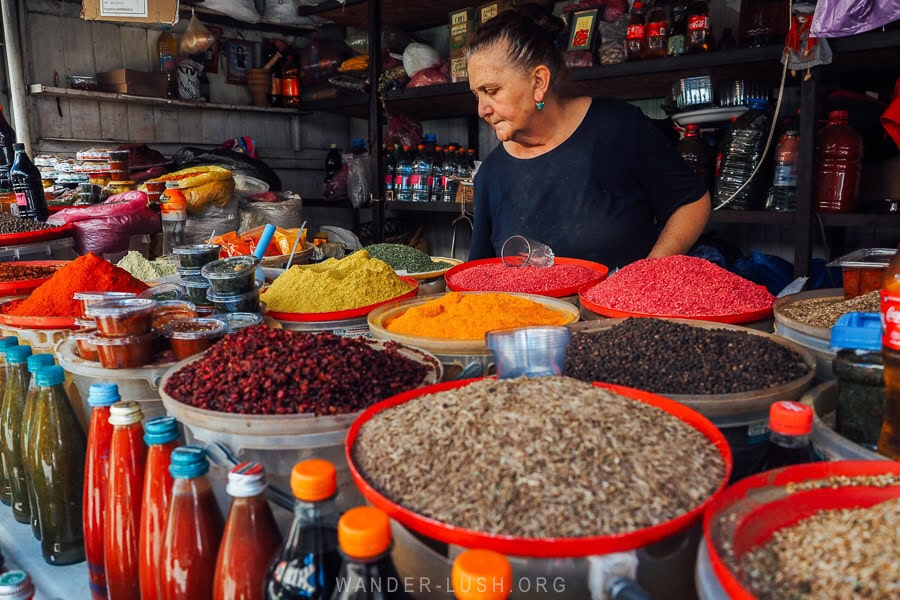
It gave me a new appreciation for the quality and quantity of Georgian produce (just wait until you see the colours), and it certainly made me curious to try some lighter, fresher Georgian dishes come springtime.
First published in 2017 during my first visit to Tbilisi and updated for 2024 to account for recent changes, here is my complete visitors’ guide for the Dezerter Bazaar and Bazroba District.
Please note: This post contains affiliate links, meaning I may earn a commission if you make a purchase by clicking a link (at no extra cost to you). Learn more.
A quick history of Tbilisi’s Dezerter Bazaar
Every city and town in Georgia has some version of a bazari or produce market. Tbilisi’s main market, the Dezerter Bazaar area (Dezertirebi Bazroba) covers more than 2,000 square metres.
There’s no telling just how many individual stalls and shops fit together to form the Bazroba district, as it’s known. The scale of it is staggering.
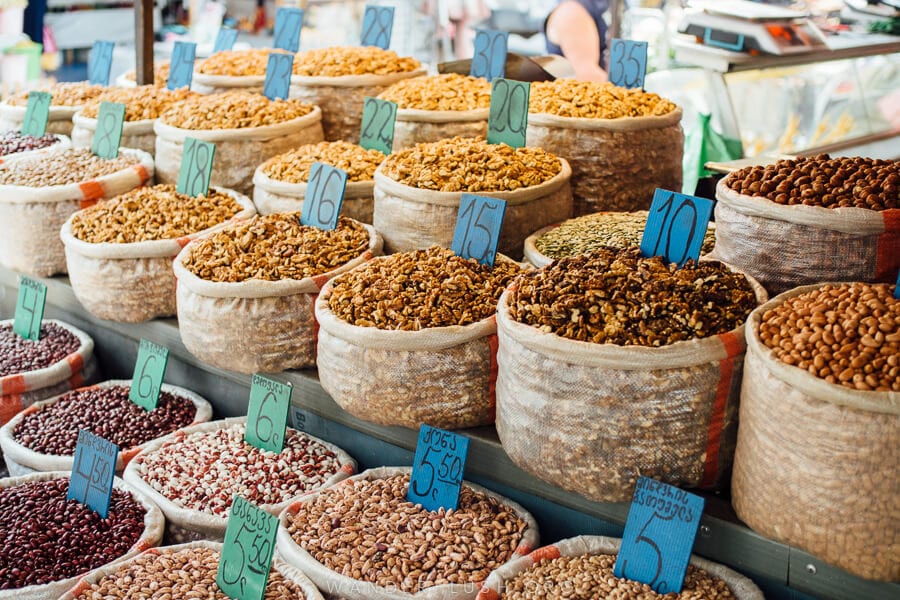
Read next: The perfect Georgia travel itinerary.
The name Dezerter Bazaar comes from the soldiers who absconded from the Russo-Georgian War in the 1920s and would offload their weapons and gear at the marketplace.
Similarly, Phnom Penh’s Psar Toul Tom Poung – better known as the Russian Market – owes its English name to the Soviet soldiers who shopped and traded there. It’s still a favourite spot for buying old Soviet coins – and maybe the odd grenade.
But that’s where the comparison between a Cambodian wet market and Georgia’s agrarian Dezerter Bazaar end.
This is a produce market primarily, with both wholesale and direct-to-customer services. Fresh fruit and veg (predominantly Georgian grown in summer and imported from Turkiye in winter) is sold here alongside spices, pickles, dairy products and meat.
The bazaar used to have an entire wine section, but that has been reduced to a handful of stalls.
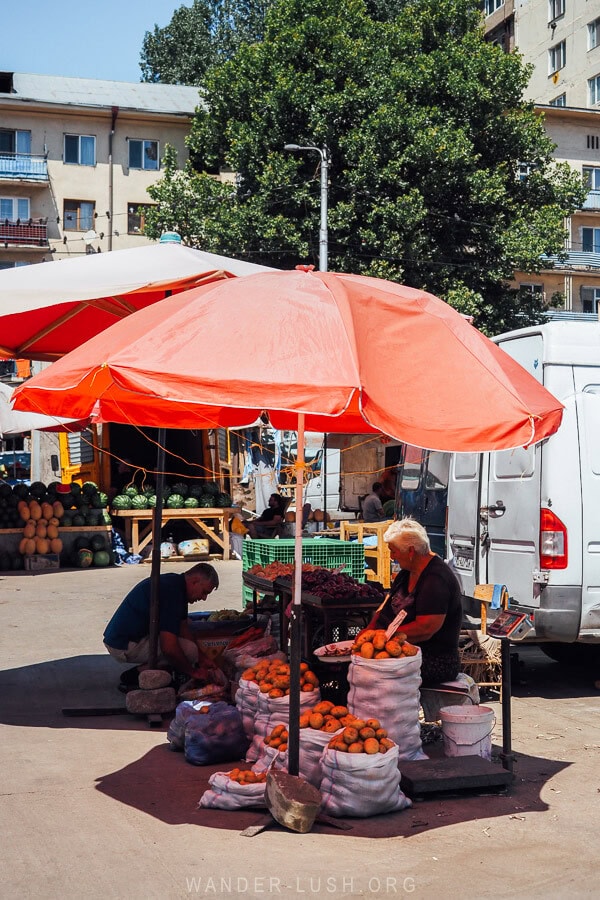
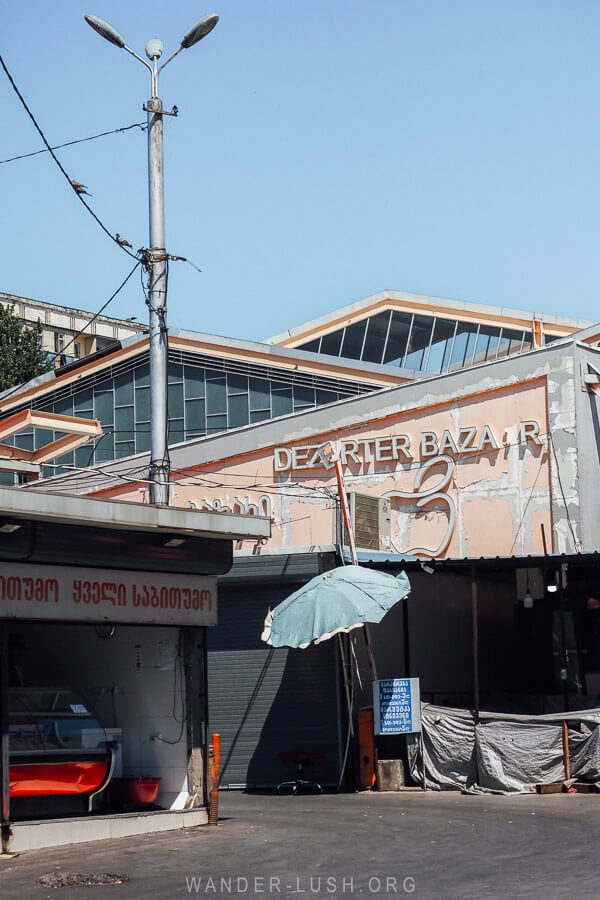
The original Dezerter Bazaar building was built during the Soviet era and resembled a typical Georgian marketplace with a domed roof. That building was demolished during Mikheil Saakashvili’s tenure as the President of Georgia. In 2012, it was replaced with a new, relatively polished grey-and-peach building with a large carpark in front.
Tenants were asked to temporarily vacate the market so that construction works could begin. But the demolition took place without the knowledge of many people, and they lost everything overnight.
Most never returned to the building. Instead, they carved out informal niches to sell their wares in the streets, laneways and car parks around the bazaar and inside the marketplace across the street. This all adds to the Dezerter Bazaar’s sprawling feel.
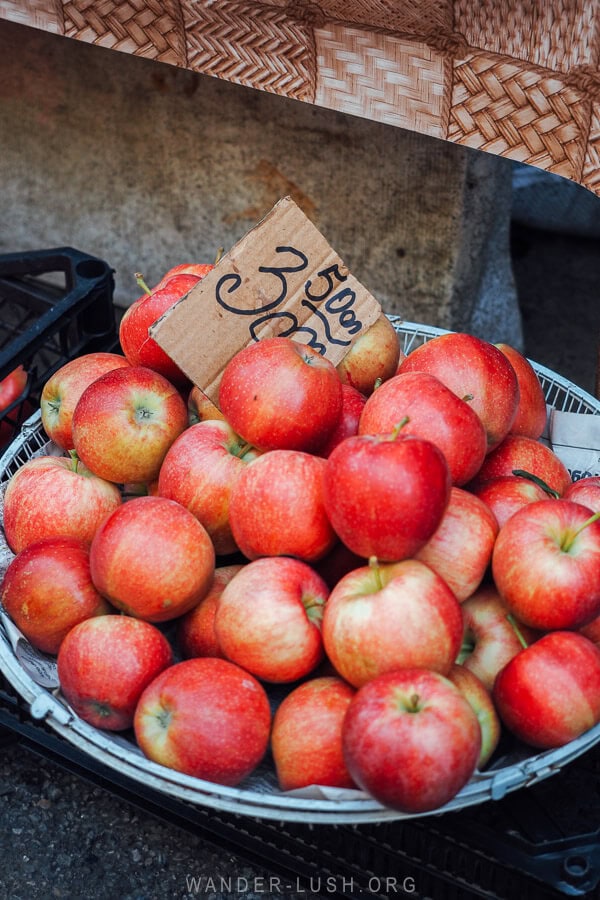
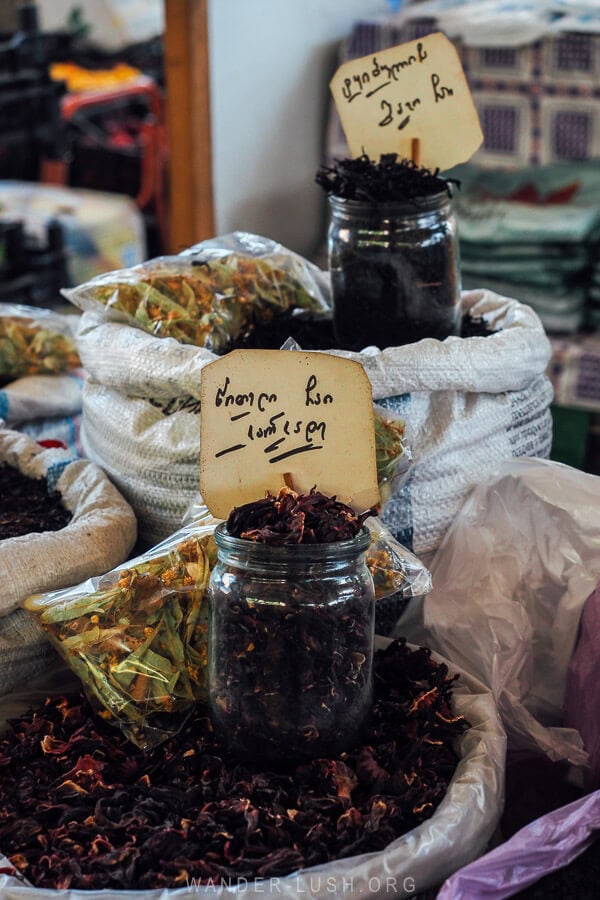
More than just a market
The Dezerter Bazaar is the beating heart of Tbilisi. It’s informal, it’s raw, and it’s a bit dirty – but that’s why we love it.
There are countless food-related stories tied into the bazaar – for example the advent of Mexican potatoes, or the creeping popularity of the Caesar salad, which led to romaine lettuce being sold for the first time in Georgia at this location.
Then there’s the people who make the bazaar tick. Every vendor here has a compelling story to tell – whether it’s about fleeing Abkhazia during the civil war and finding a place in the bazaar to eke out a living, or being dismissed from this or that ministry and turning to selling homemade goods to make ends meet.
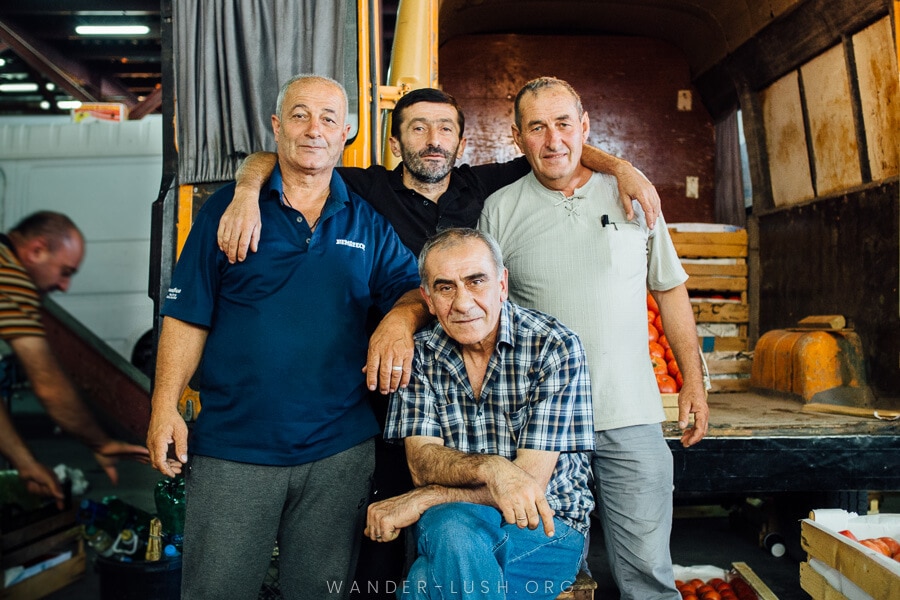
The feeling of community here is touching. The Dezerter is a bright spot in that way. In my opinion, it is one of the last places in Tbilisi where you can feel the old comradery and closeness that used to be much more common in the capital when I first visited a decade ago.
This is part of the reason why plans to demolish the Dezerter Bazaar have been met with almost universal outcry.

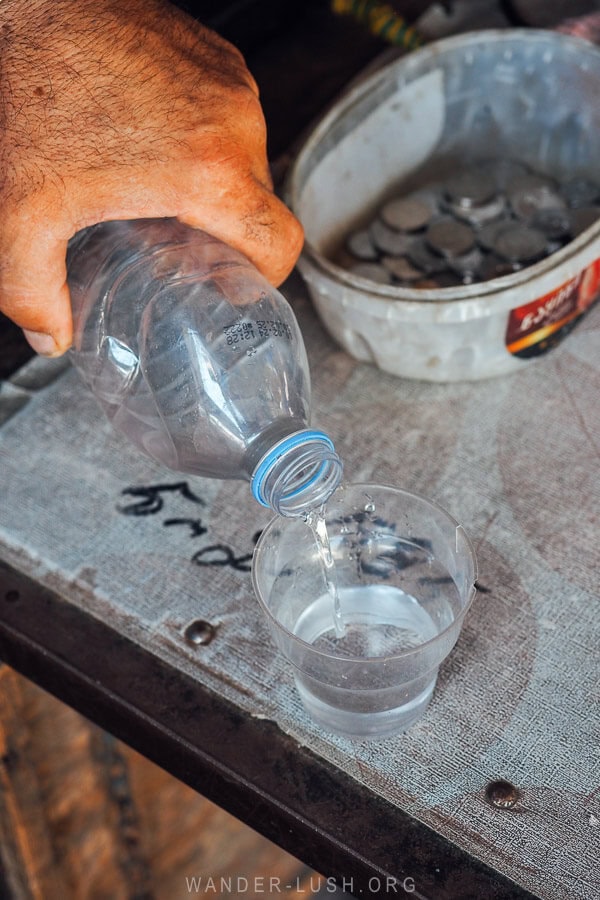
An uncertain future
In early 2024, plans were unveiled to turn part of the Dezerter Bazaar area into a formalised ‘shopping mall’. From the masterplan sketches, it appears that this would involve knocking down the pink-and-grey Dezerter building itself, and clearing roughly half a block’s worth of outdoor stalls.
More than 100 business owners would be directly impacted. Yet more would be displaced during the construction work, and apparently there have not been any discussions about how to compensate them. Some people have been offered the opportunity to relocate to other market districts elsewhere in Tbilisi.

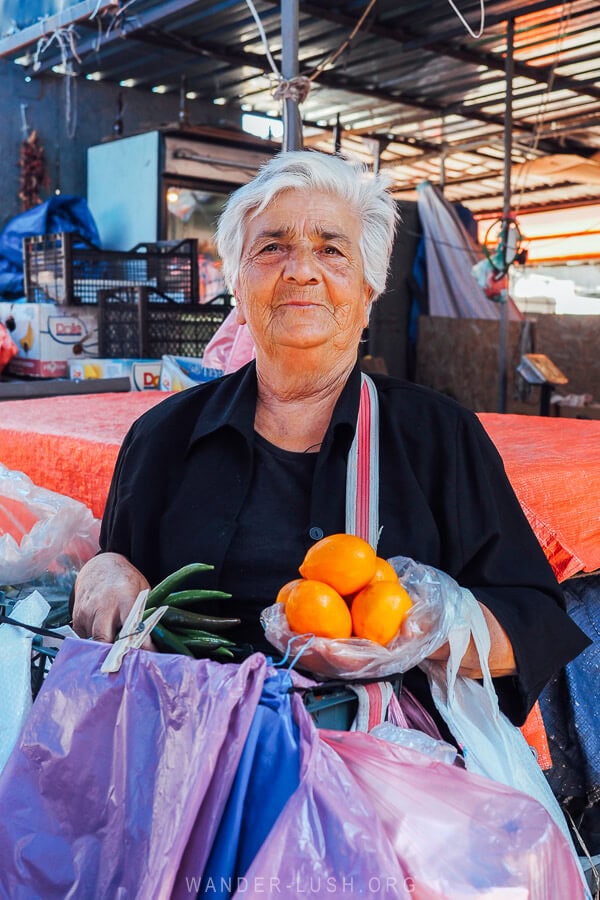
At the beginning of August, stallholders were given until the 15th to pack up their stalls. I visited the Dezerter Bazaar on the eve of this massive change – what I and many people thought would be the last day of trade.
I discovered that the date has been postponed – until after the election, until the new year, or until 2026 – it depends who you ask. Truthfully, no one seems to know what is happening, least of all those who will be directly impacted.
Tbilisi is a fast-changing city and I do not doubt for a second that this atmospheric, hodgepodge market’s days are numbered.
My advice? Visit while you still can.
Looking for the perfect souvenir to take home from Georgia? Check out my guide to buying handmade textiles, gifts and souvenirs in Tbilisi.
How to get to the Dezerter Bazaar
The Dezerter Bazaar is located north of Old Tbilisi on the eastern side of the river, close to Tbilisi Central Railway Station and Dinamo Arena. There are lots of ways to enter the bazaar, but you will find the main entrance on Tsinamdzgvrishvili Street.
To get there, take the metro to Station Square and walk one block west. Buses 308 and 306 from Freedom Square pull up right outside the market at the stop called ‘Tsinamdzgvrishvili Street #135’.
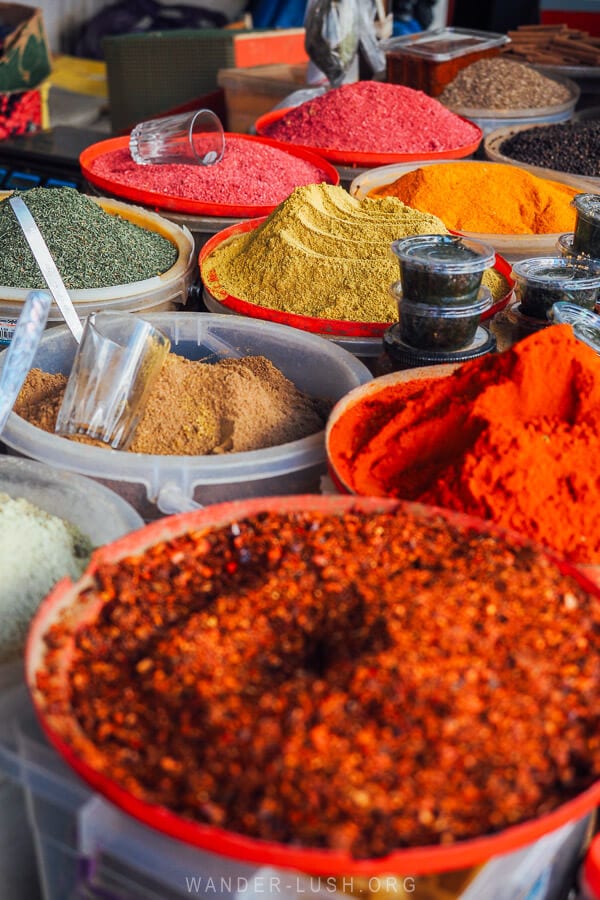
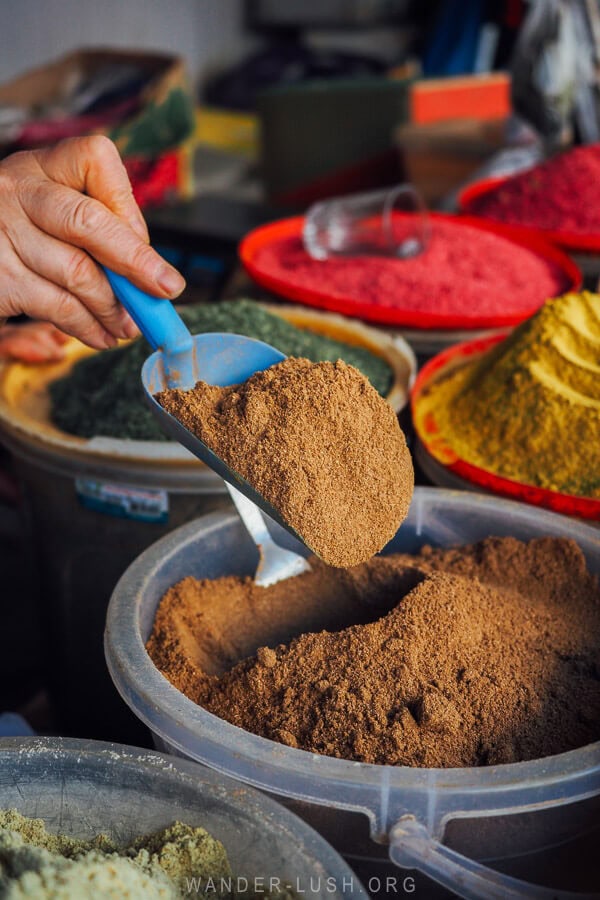
Opening hours & best time to visit
The Dezerter Bazaar is officially open daily from 7am until 5pm. The market is at its liveliest in the morning, with things gradually winding down by 1-2pm. I recommend coming in early, right after breakfast.
What to see at the Dezerter Bazaar
It’s hard to know exactly where the Dezerter Bazaar begins and ends. I distinctly remember walking to and from our apartment in Tsereteli on our first trip to Tbilisi and noticing that fruit and clothing stalls continued all the way along the road, past the stadium. One market seems to merge into the next.
Here are the five main sections of the Bazroba district and highlights of each one.
Dezerter Bazaar
‘Dezerter Bazaar’ has become a catch-all name for the entire market district, but the Dezerter Bazaar proper is one building. This is the undercover hall that was built in 2012 to replace to old Soviet-era marketplace.
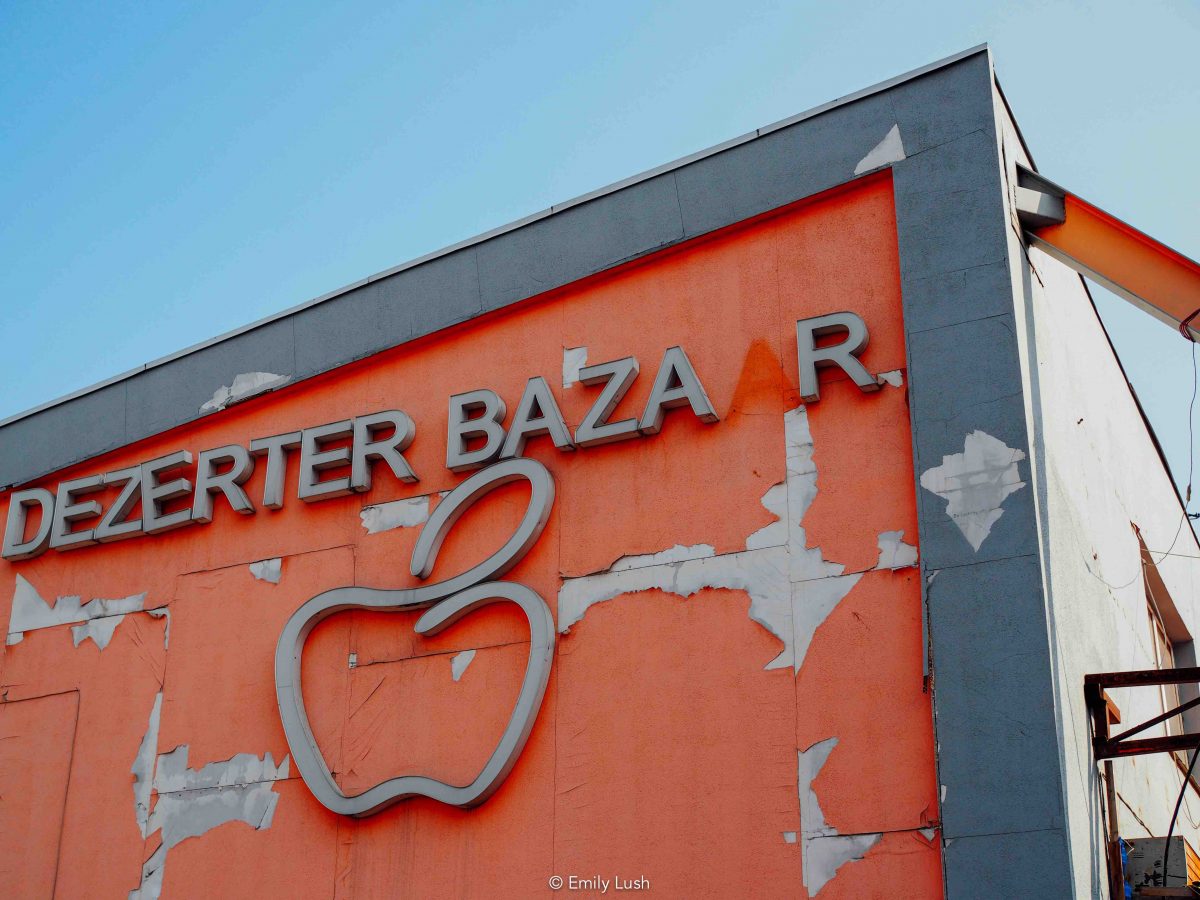
It has two stories: The undercroft is reserved for trucks, while the upper floor – accessed via staircases on both sides of the building – is home to wholesalers who trade with restauranteurs and shop owners. Admittedly this is not the most ‘beautiful’ part of the market – it is quite sparsely populated with lots of concrete and high metal rafters.
This area is fun to visit in the early morning though when trucks come in from the regions (or from crossing the border) and unload their bevy of apples, stonefruit, potatoes or whatever happens to be in season onto four-wheel trolleys.
Watch your toes around the trolley drivers – they move around at breakneck speed and take no prisoners!
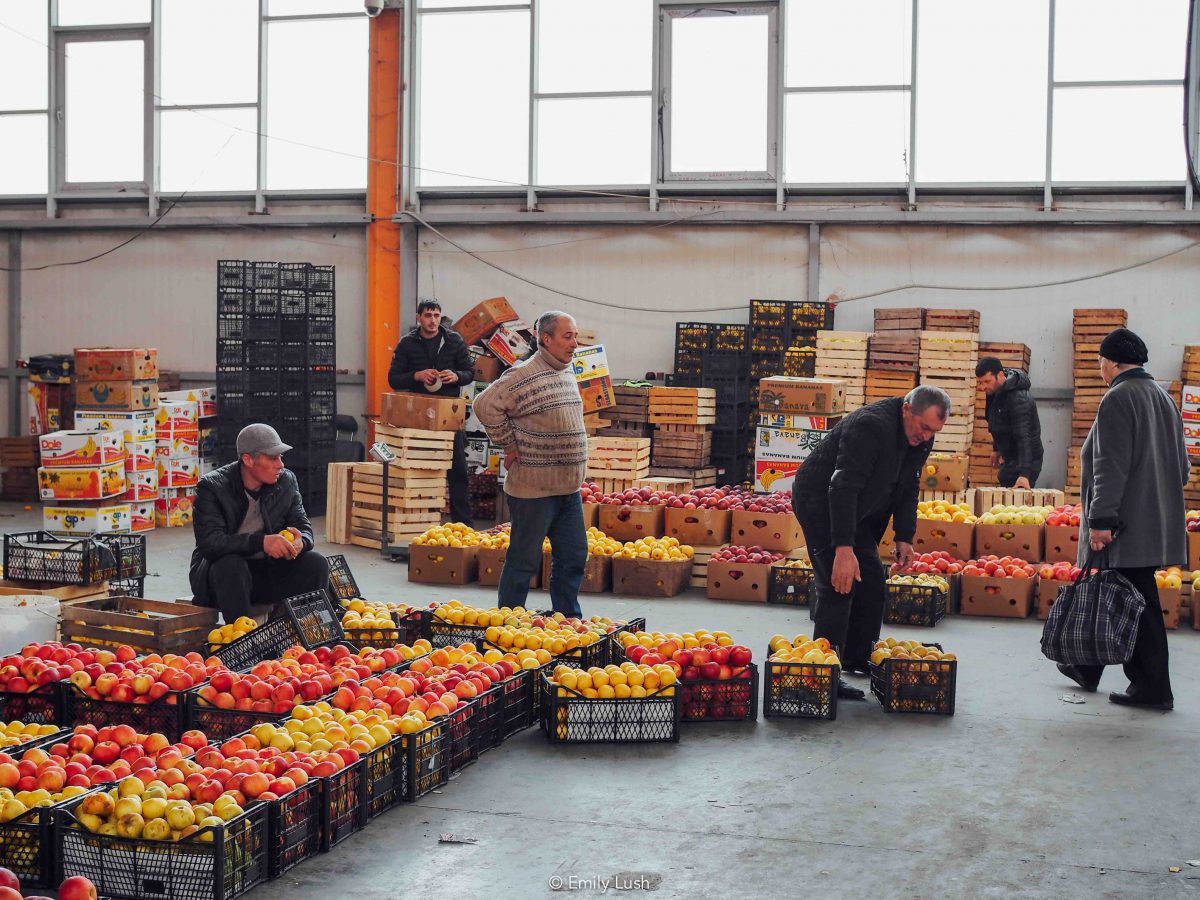
The big carpark in front of the warehouse and the little alleys and streets around the periphery have an array of stalls that are more interesting. Here’s where you can find herbs, spices, Gurian tea, tobaccos, and fruit and veg sold by the kilo.
Dinamo Market
The Dinamo Market is located on the same block inside the old brick building that borders the Dezerter carpark. It is more atmospheric (and photogenic) in my opinion, so I always recommend focusing your attention here.
Head up the stairs, and the first group you will encounter are the honey vendors. Down to the left, there is an aisle of cheese shops – only a couple of vendors make Guda cheese from Tusheti the old-fashioned way by ageing it in a sheepskin sack.
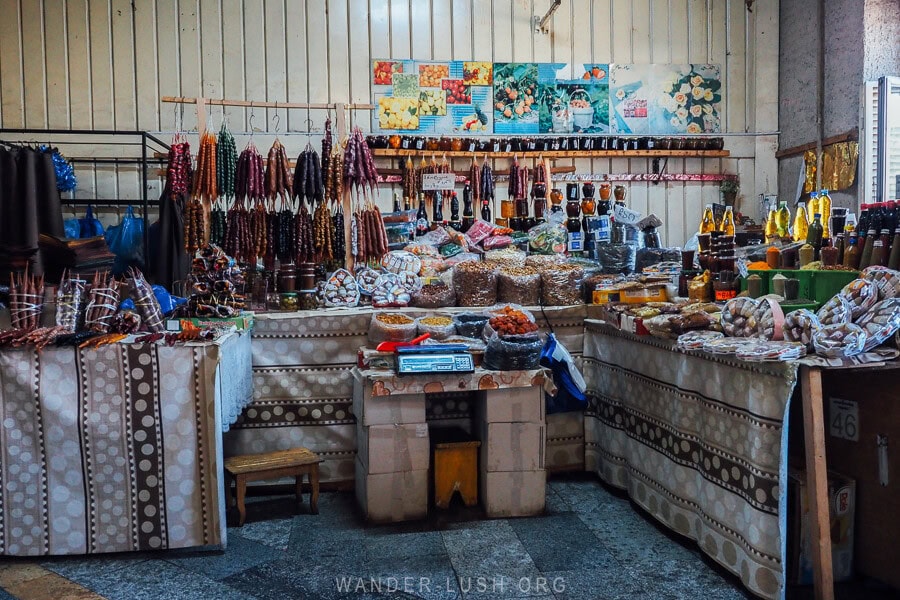
Along this wall there is a lovely makeshift alter crowded with icons – just one of the little things that make the market special.
Cut through the back way and you will stumble on a cosy room where Mahkvala sifts premium corn flour from Abasha with a beautiful smile on her face. She is very gregarious and loves to show off her tallest pile of flour, which she calls ‘snow mountain’!
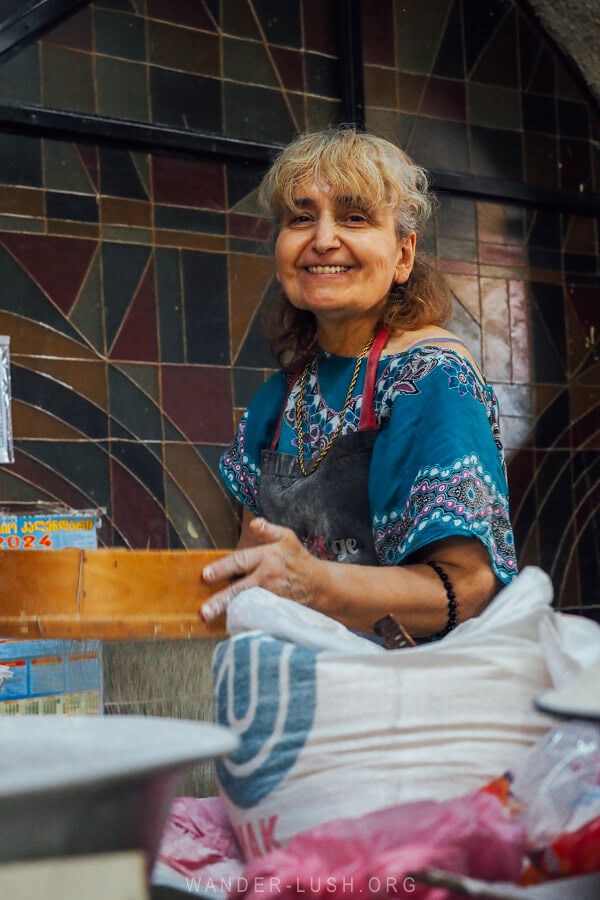
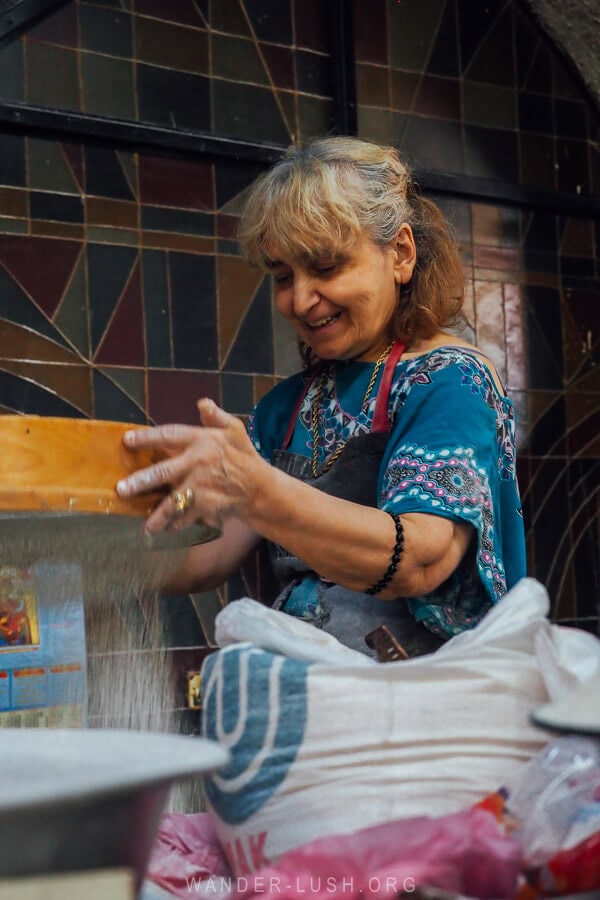
Across the aisle, Nino is very convincing when she tries to sell her pomegranate sauce and spice blends.
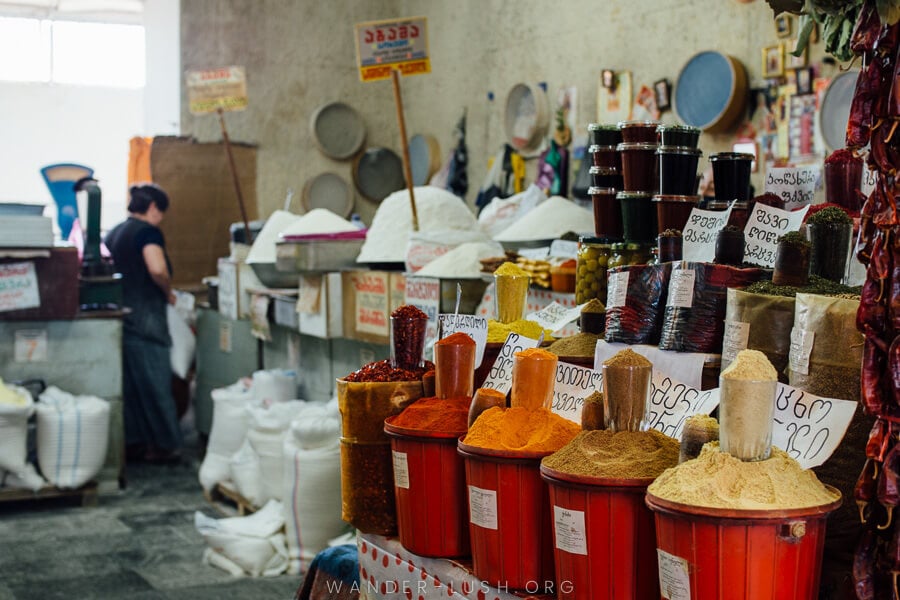
This building also has a butcher’s section, and a large halls with rows of spices, tea, nuts, and cured pork from Racha.

Under the building there is a long arcade with shops and people selling all sorts of things off collapsable tables. This is where I once bought a khinkali-sized rolling pin and round dough cutter.
If the planned shopping mall development goes ahead, this building will supposedly not be affected.
Sakolmeurneo Bazari
Named after the Georgian folk dance, this section of the market is located on the other side of Tsinamdzghvrishvili Street, opposite the Dezerter carpark. It started out as a conglomeration of shops selling plastic goods, but when the old market was demolished some of the previous vendors settled here.
This area is far less formal, mostly comprised of little tin sheds with bare lightbulbs dangling from the ceiling, plus some larger undercover areas. The same sort of products can be found (nuts, churchkhela, spices, fruit, etc).
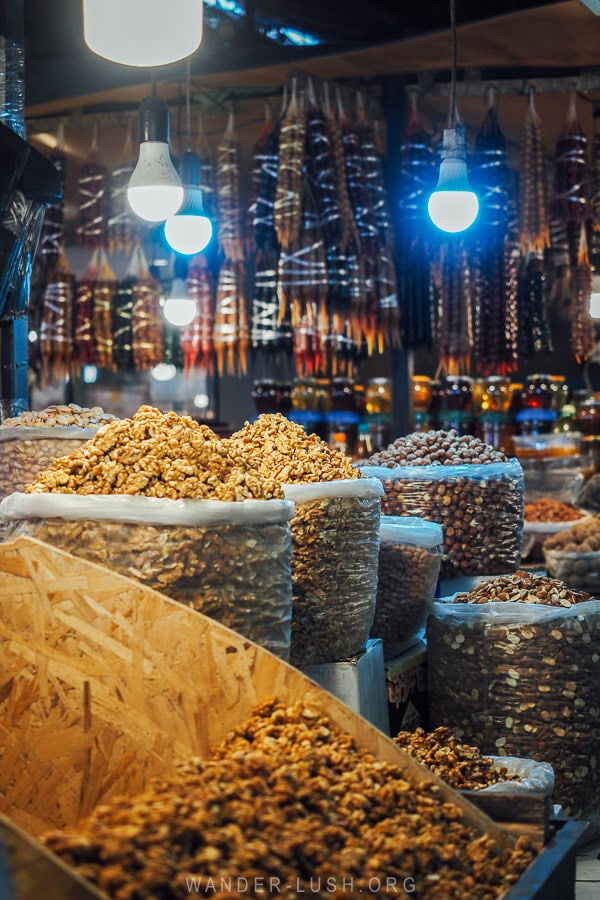
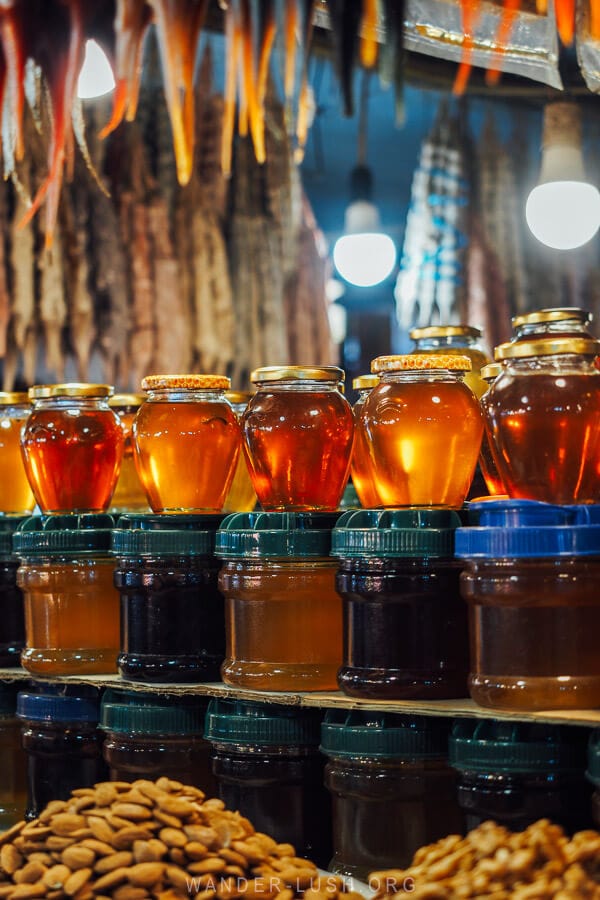
At the back of the bazari there are several shelters that act as little bar-restaurants. Vendors and workers at the market come here for a quick bite (i.e. a liquid lunch) of watered down wine and to nibble on various complimentary chasers (grapes, popcorn, biscuits) set out on a long table.
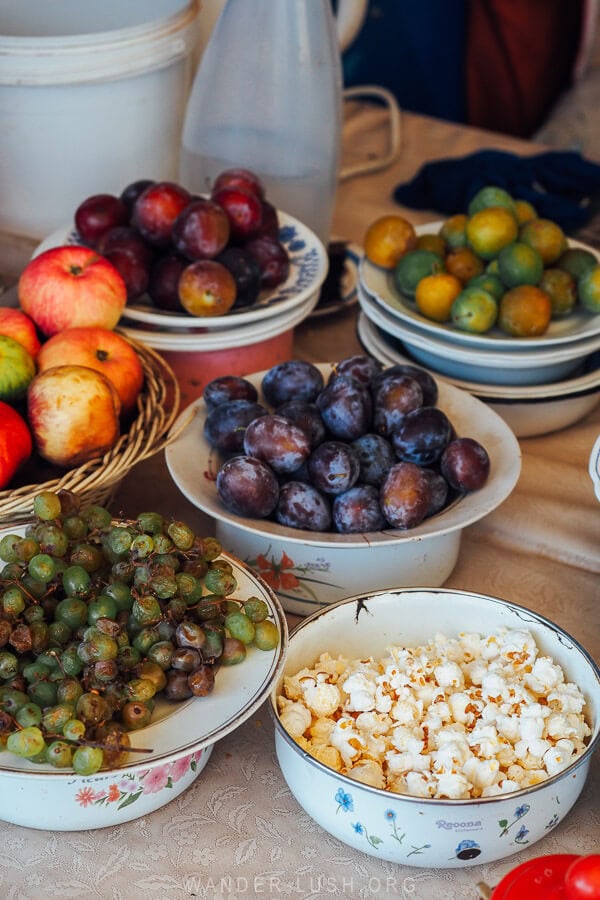
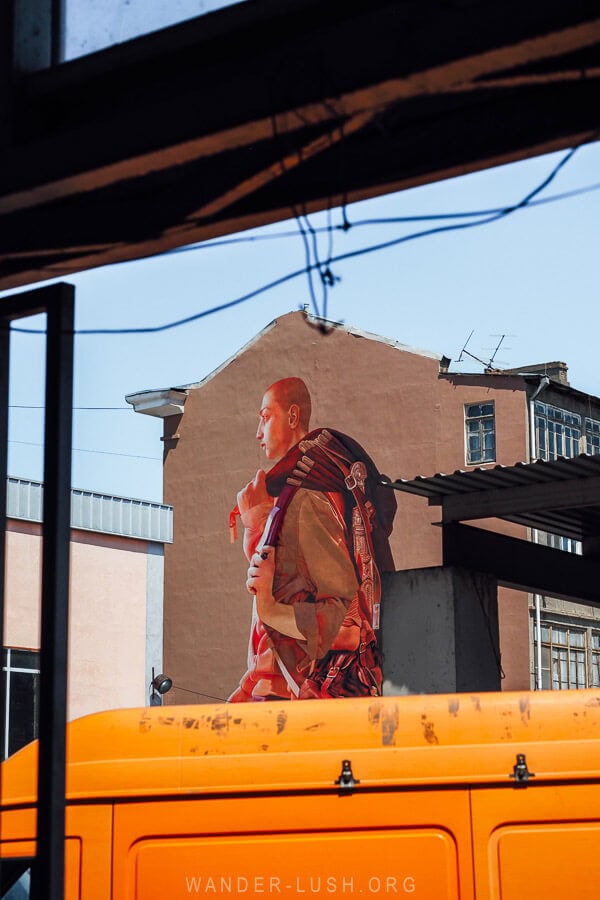
Passaji
Passaji is a single-storey mall at the corner of Tsabadze and Abastumani Streets, one block to the north of the Dezerter Bazaar. Outlets sell clothing, musical instruments, electronics and sundry. One shop to look out for is Givi Papa. Located just inside the Abastumani Street entrance, it carries a great array of spices.
Underground second-hand markets & the Passage Bridge
If you think the street-level market is big, wait until you see what is happening underground. Below Station Square and Central Station there is a network of subterranean tunnels (likely totalling more than a kilometre) that has a dozen different entrances. It is a warren of second-hand clothing shops where you can buy per item or by the kilo.
The ‘tube’ Passage Bridge that runs across the railway tracks behind the Transport Company building is similarly chokkas. You can sometimes find collector’s pieces here – but if you suffer from claustrophobia, best to give it a miss!
Dezerter Vintage
If you’re into thrifting, Dezerter Vintage offers a more curated experience. There are racks of brand-name clothing for men and women, boots, vintage kimonos and leathergoods, plus dresses for rent. The breezy warehouse space has a high ceiling and a lounge area where you can stop for a coffee break.

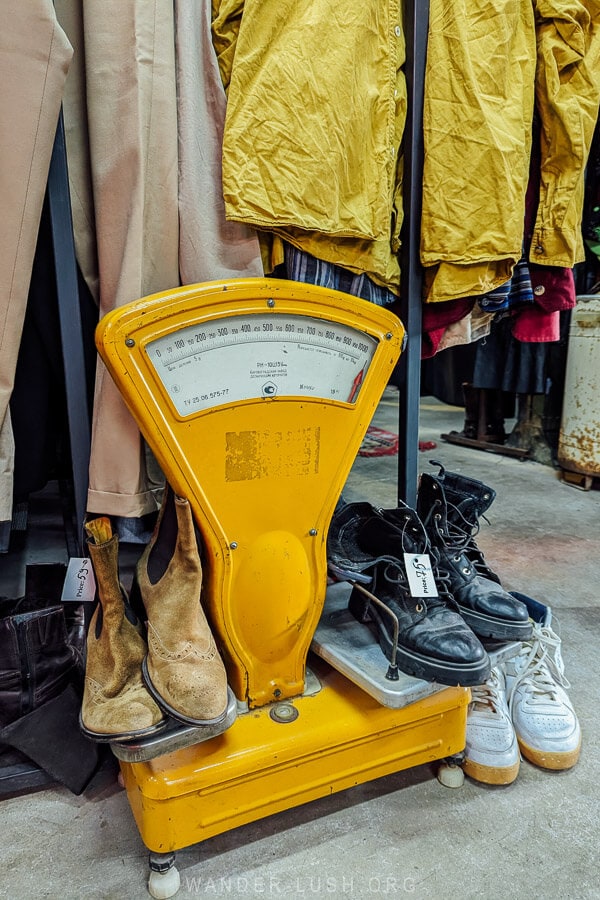
Dezerter Vintage is located on the same block as the Dezerter Bazaar and can be accessed from inside the carpark or from Tamar Mepe Avenue. Two doors down from this Roniko eyeglasses shop, there is an open doorway. Walk through the covered section, past the little spice market, then you will see the warehouse on your right.
If you’re looking for a place to eat, one of my favourite new restaurants in Tbilisi, Zeche, is located close by in another repurposed warehouse space.
Guided tour of the Dezerter Bazaar
If you would like to explore the market area with a guide, there is only one person for the job: Paul Rimple. Paul is a journalist from the States who has lived in Georgia for two decades. He was charged with showing Anthony Bourdain around when he visited Tbilisi.
Paul knows the Dezerter better than anyone. As well as offering a chef’s perspective on cuisine and raw ingredients, he will introduce you to the colourful characters he has befriended over the years.
I recently spent a morning at the market with Paul. Despite having visited the Dezerter dozens of times, I learned more in those few hours than in all my years living in Georgia.
If you have so much as a passing interest in food and wine, a walking tour of the bazaar with Paul’s company, Meet Me Here – Tbilisi, should be top of your agenda.
A look inside the biggest Tbilisi market: My favourite photos of the Dezerter Bazaar through the years
Here are more of my favourite market photos from Tbilisi, taken across the different seasons during my time visiting and living in Georgia.

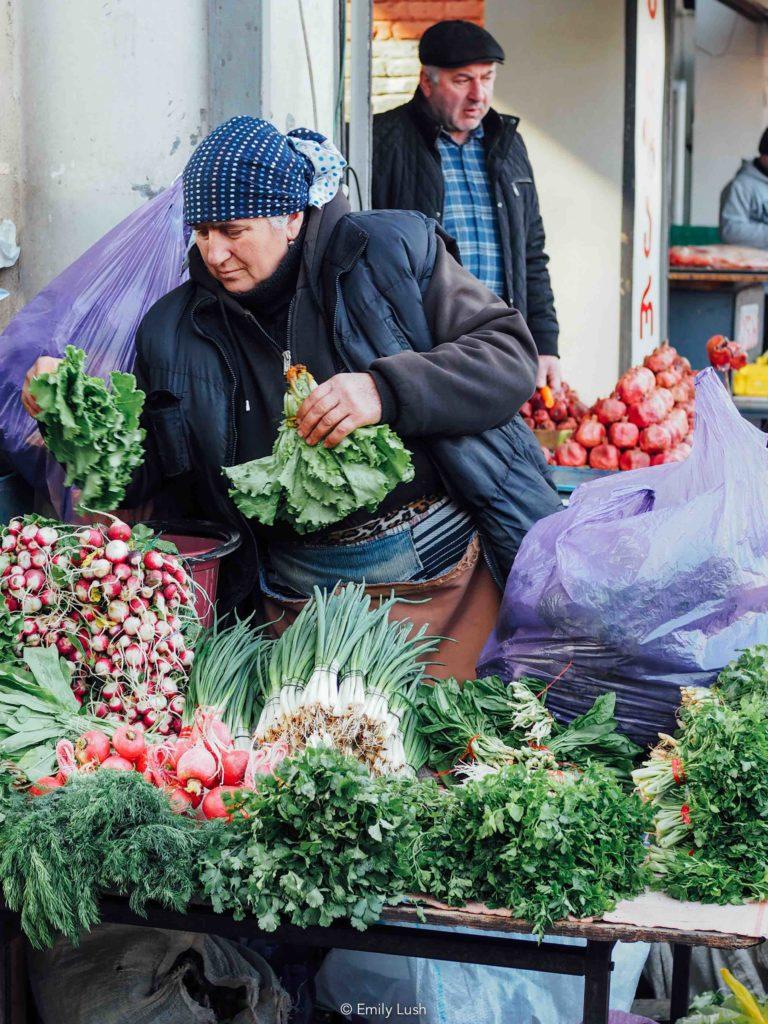
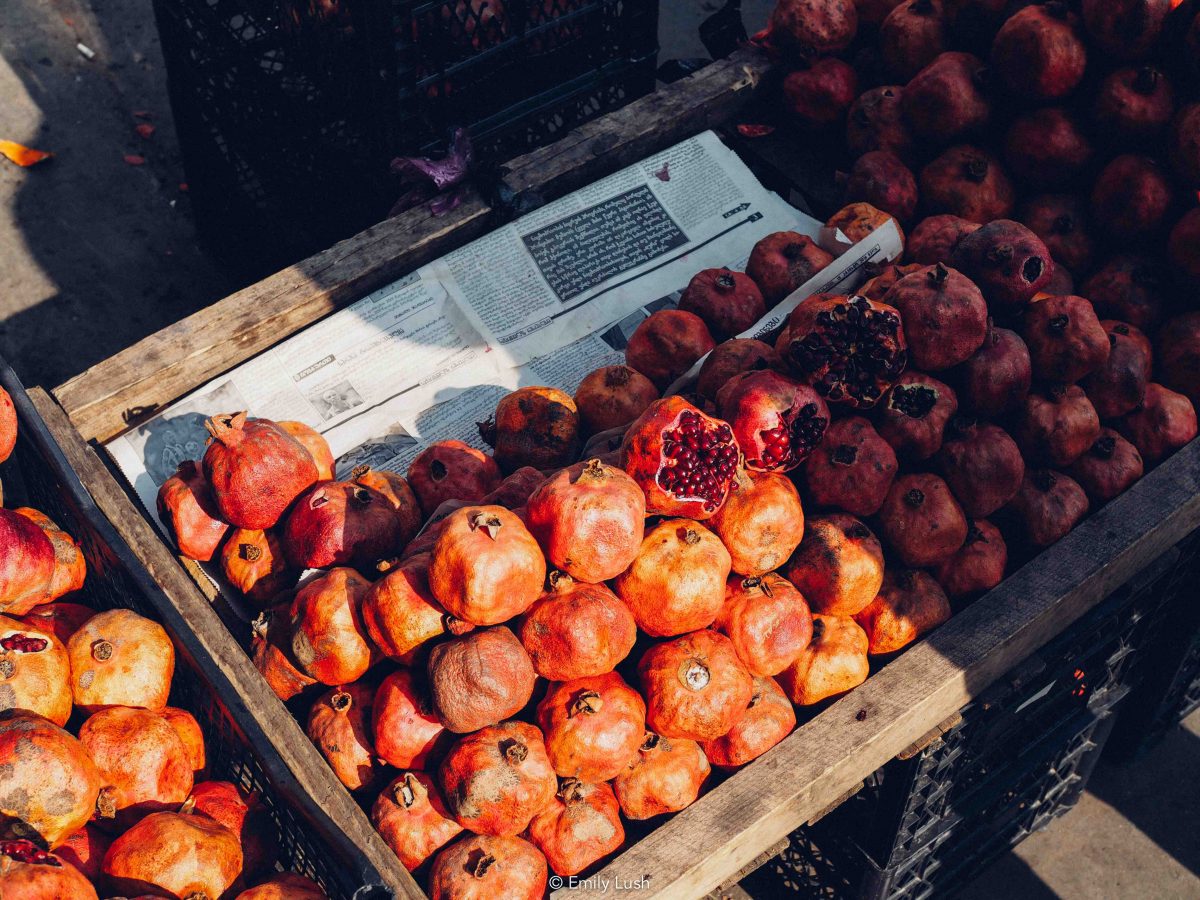
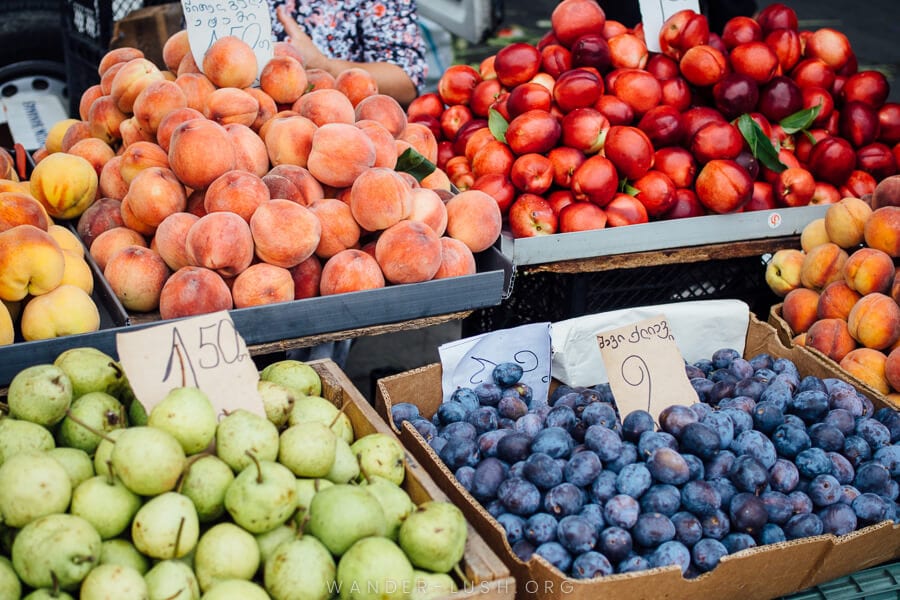
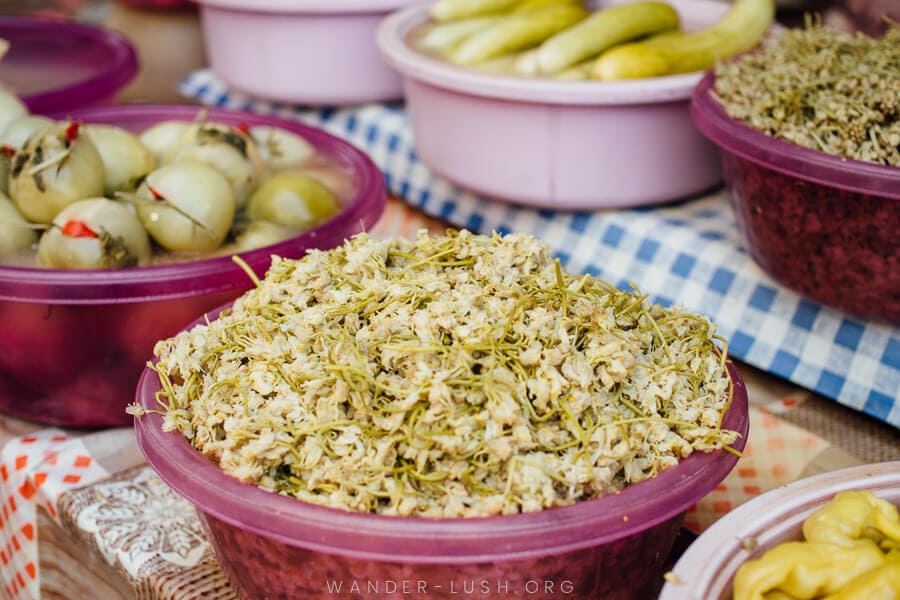
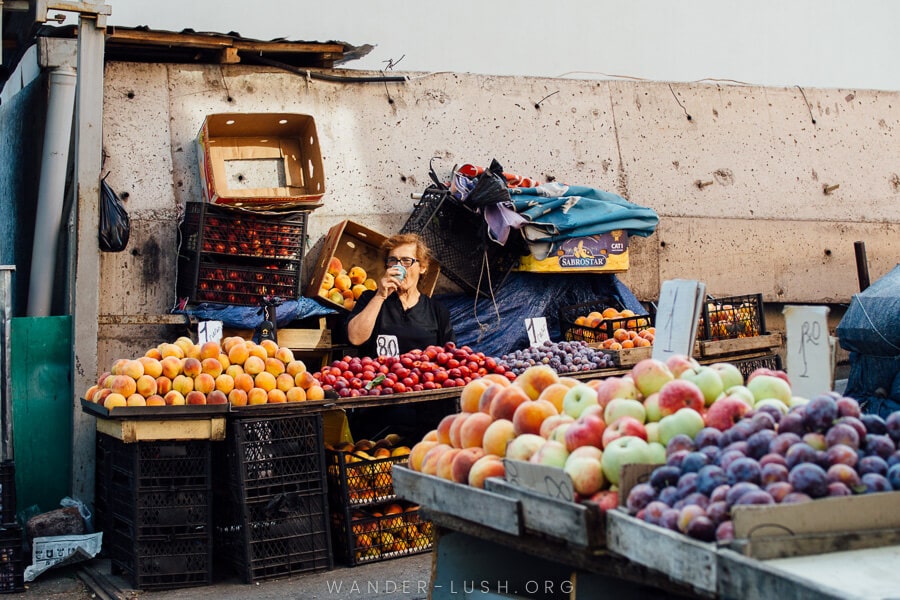


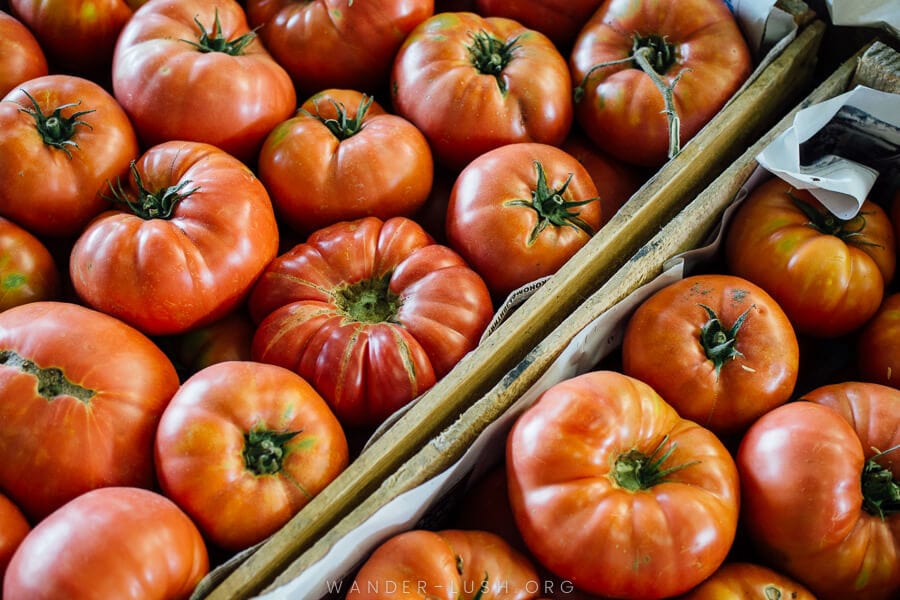
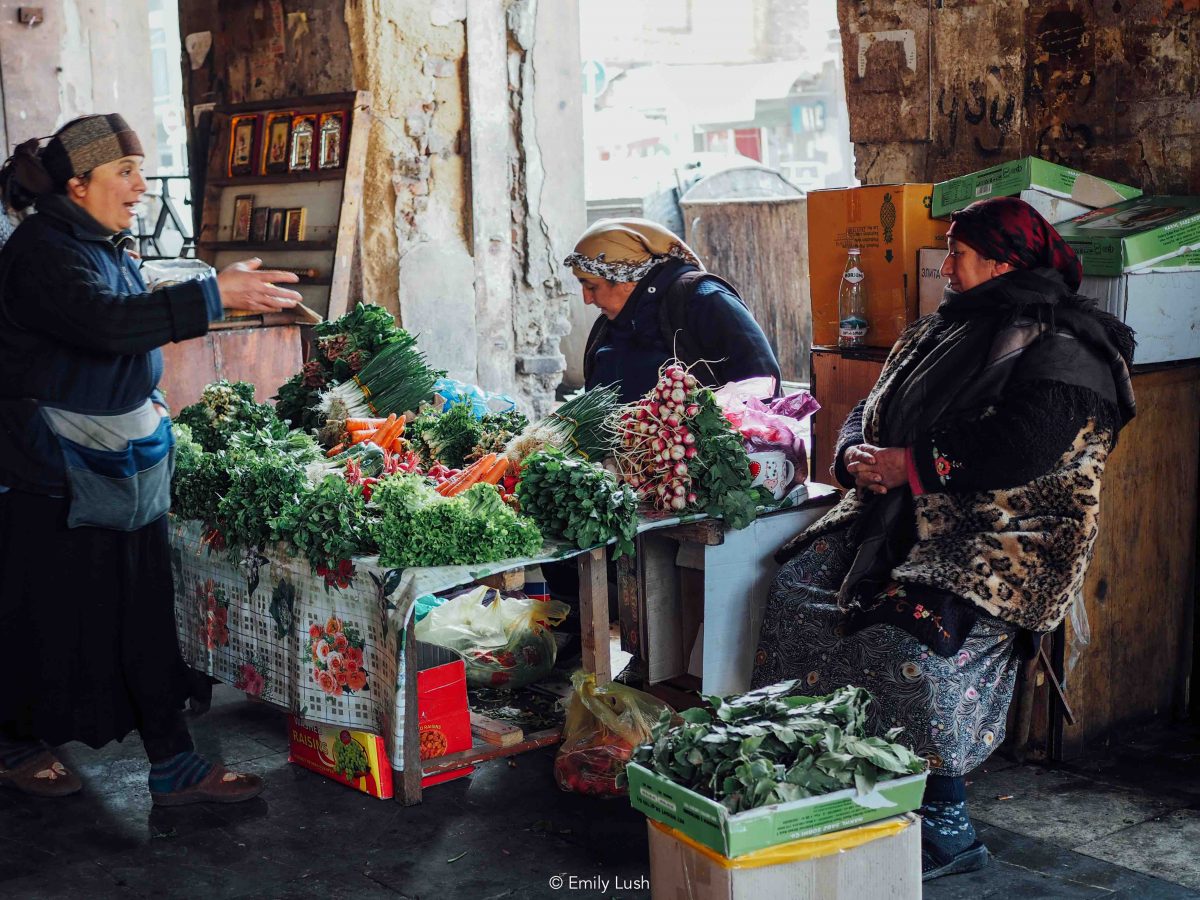
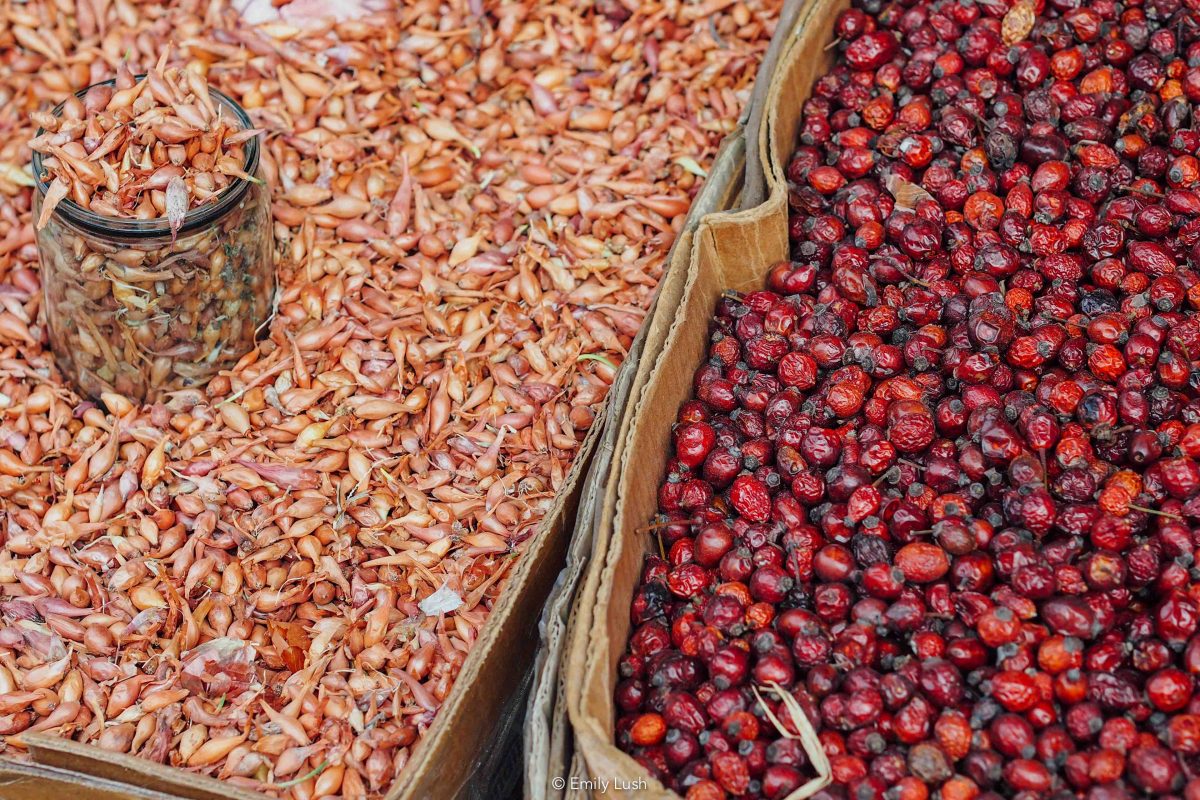
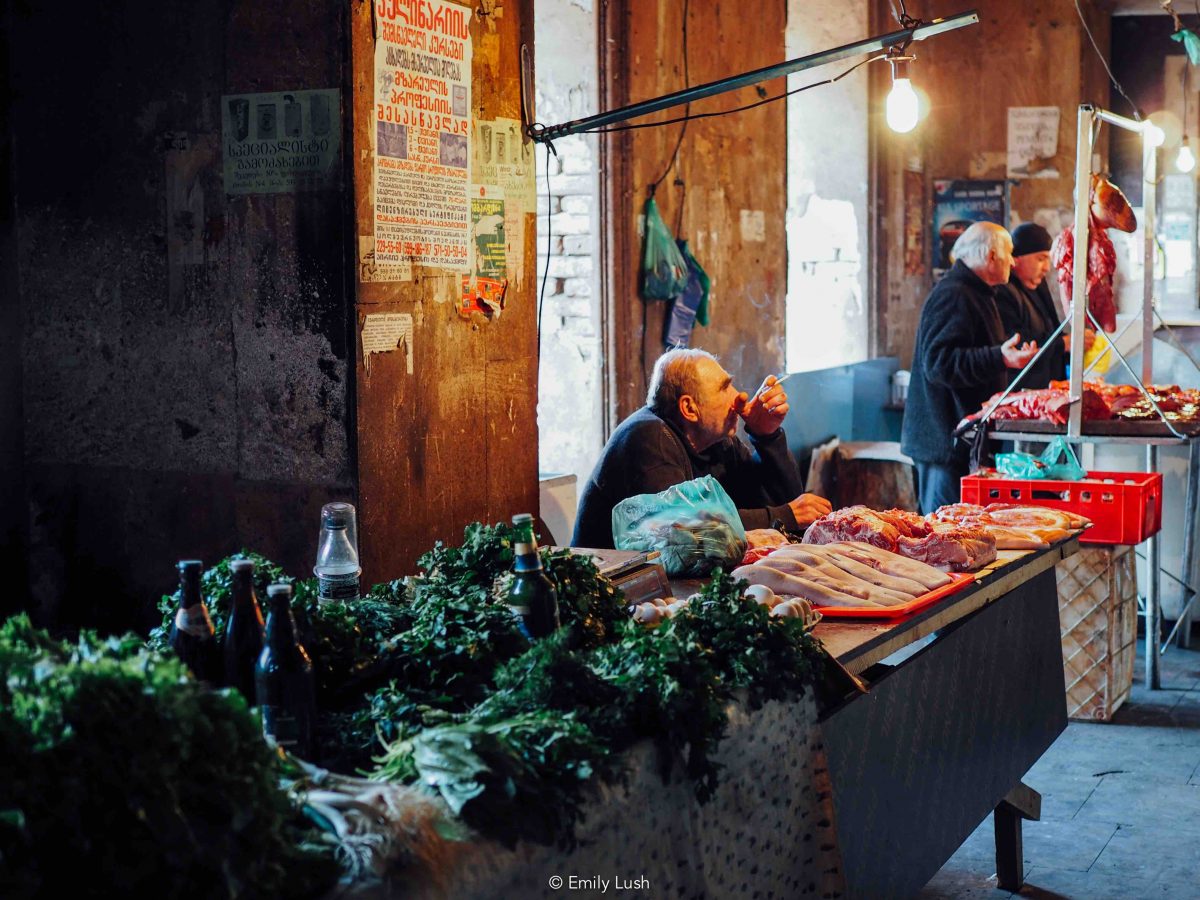
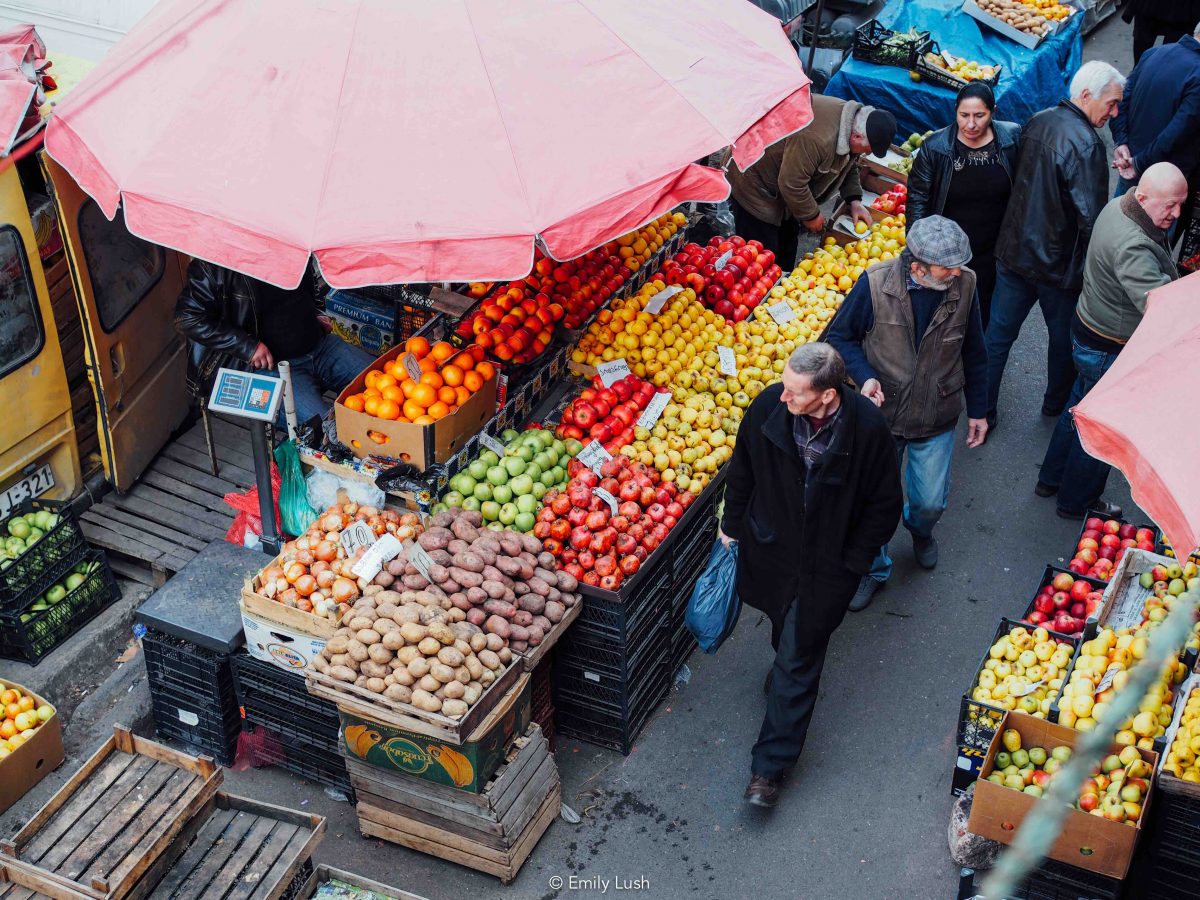
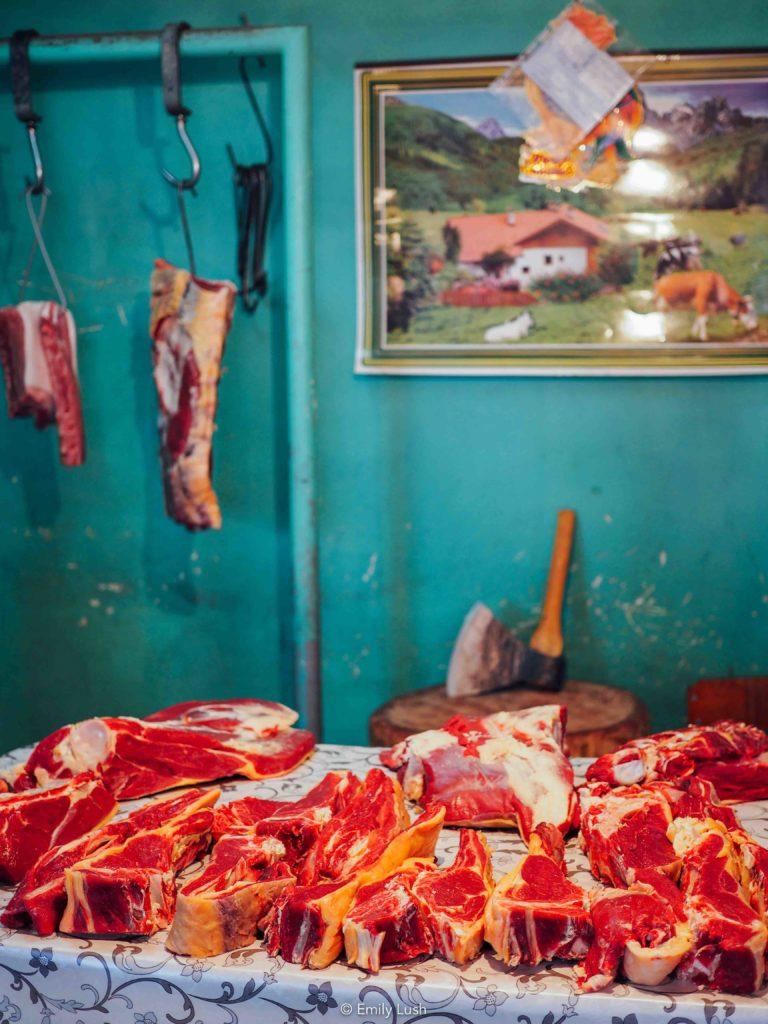
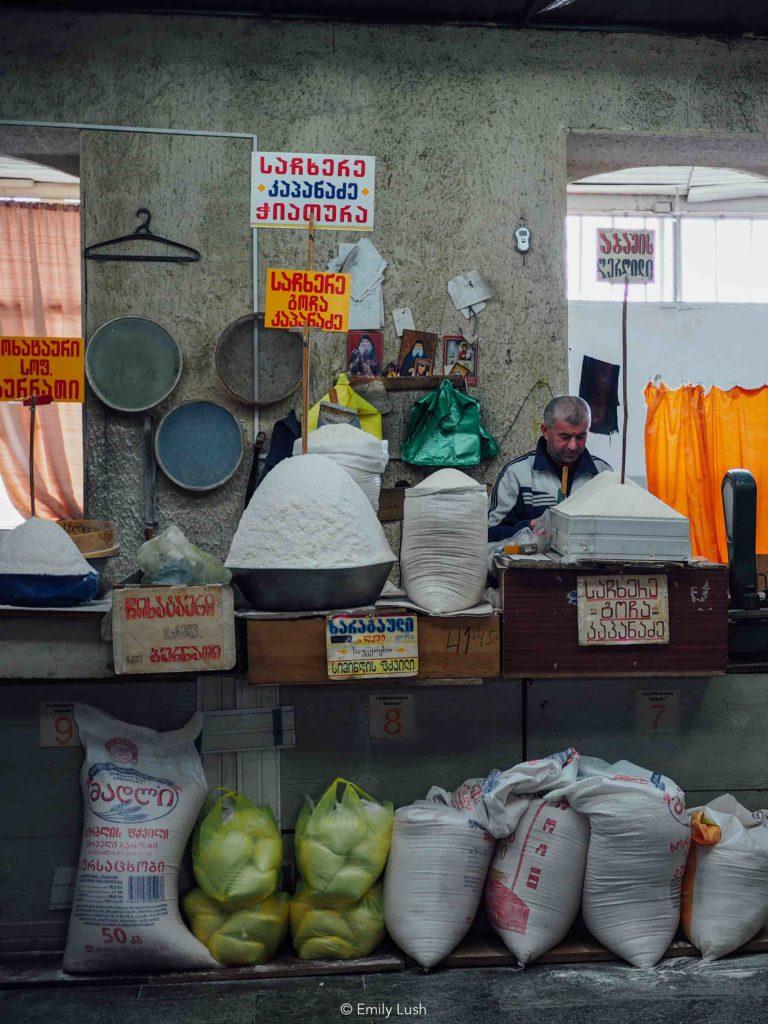
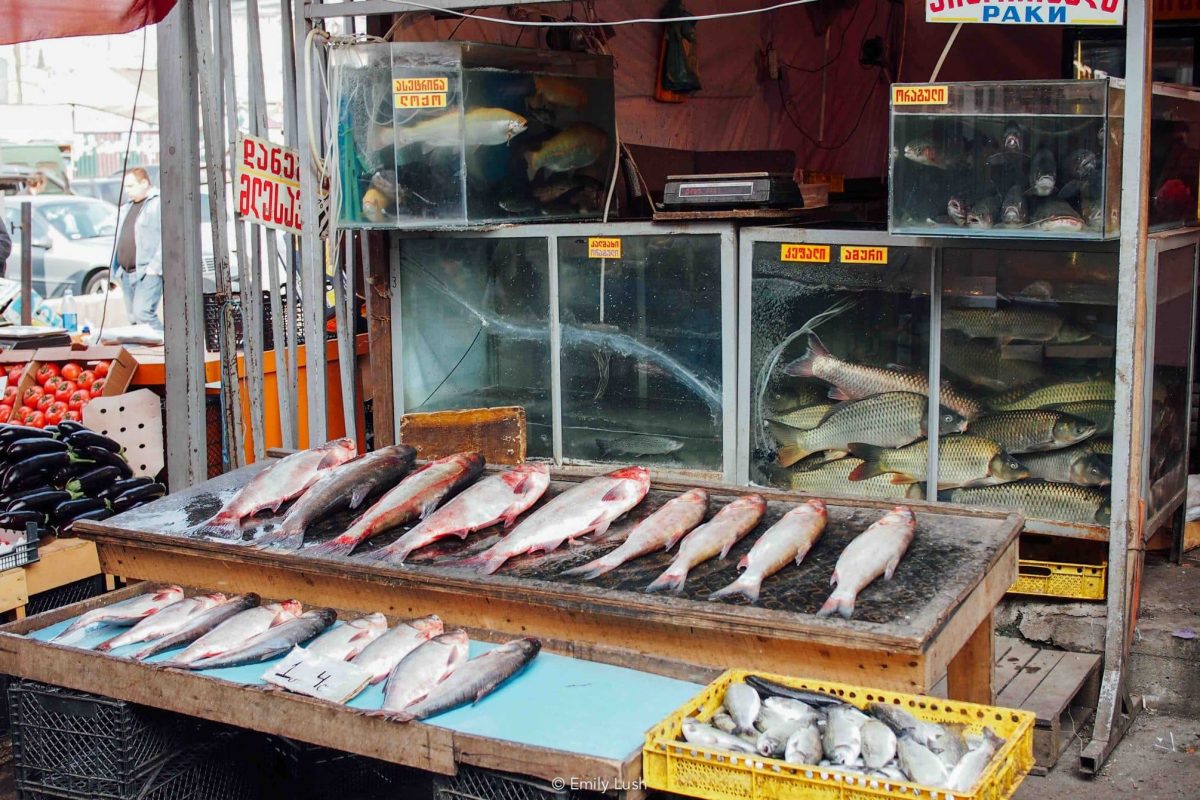
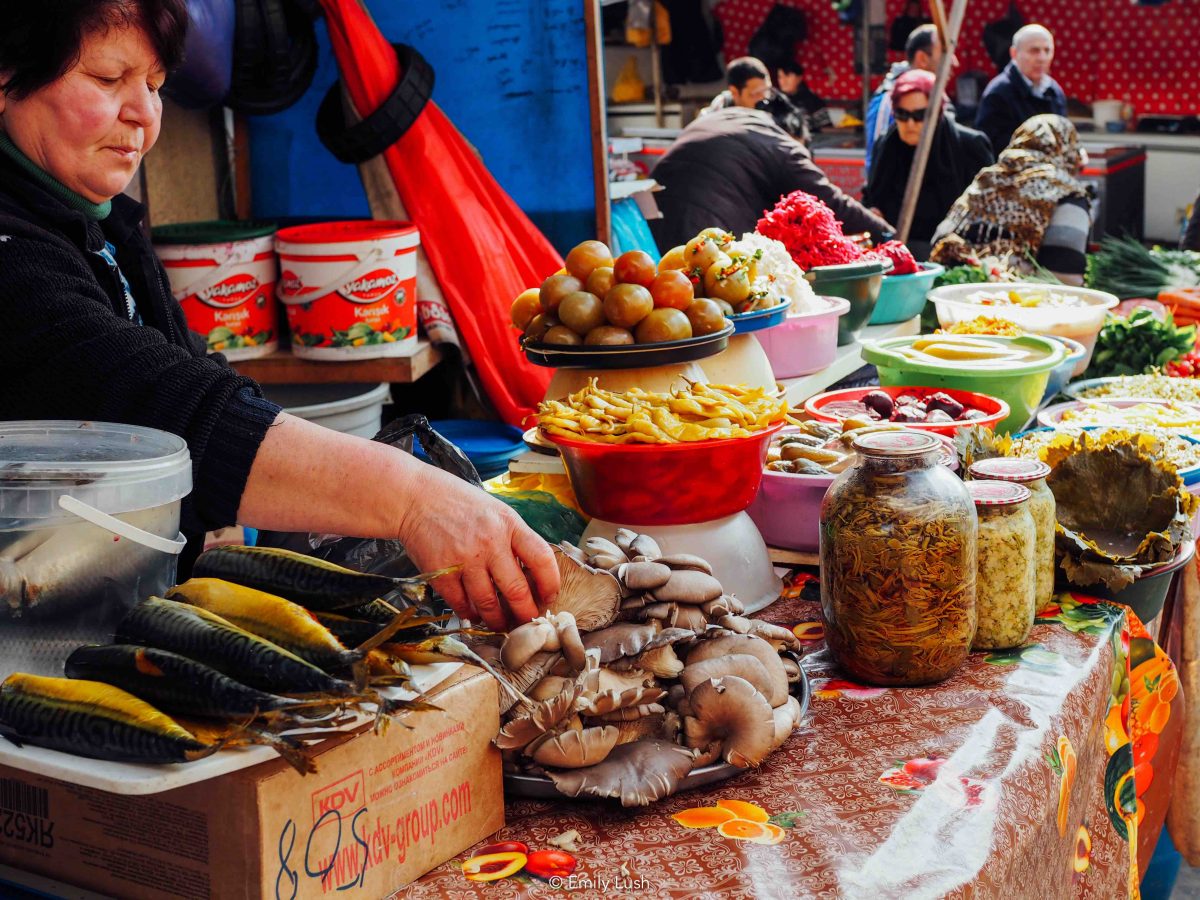
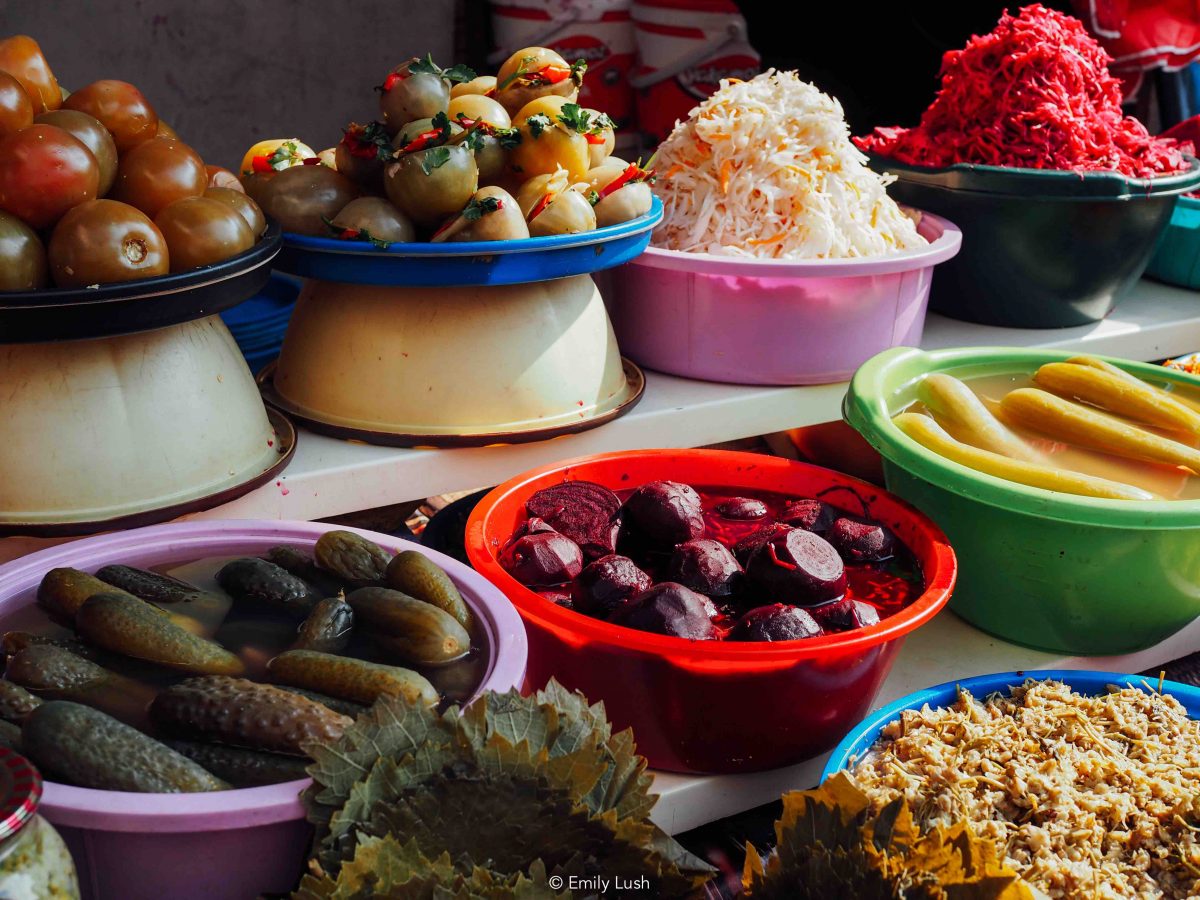
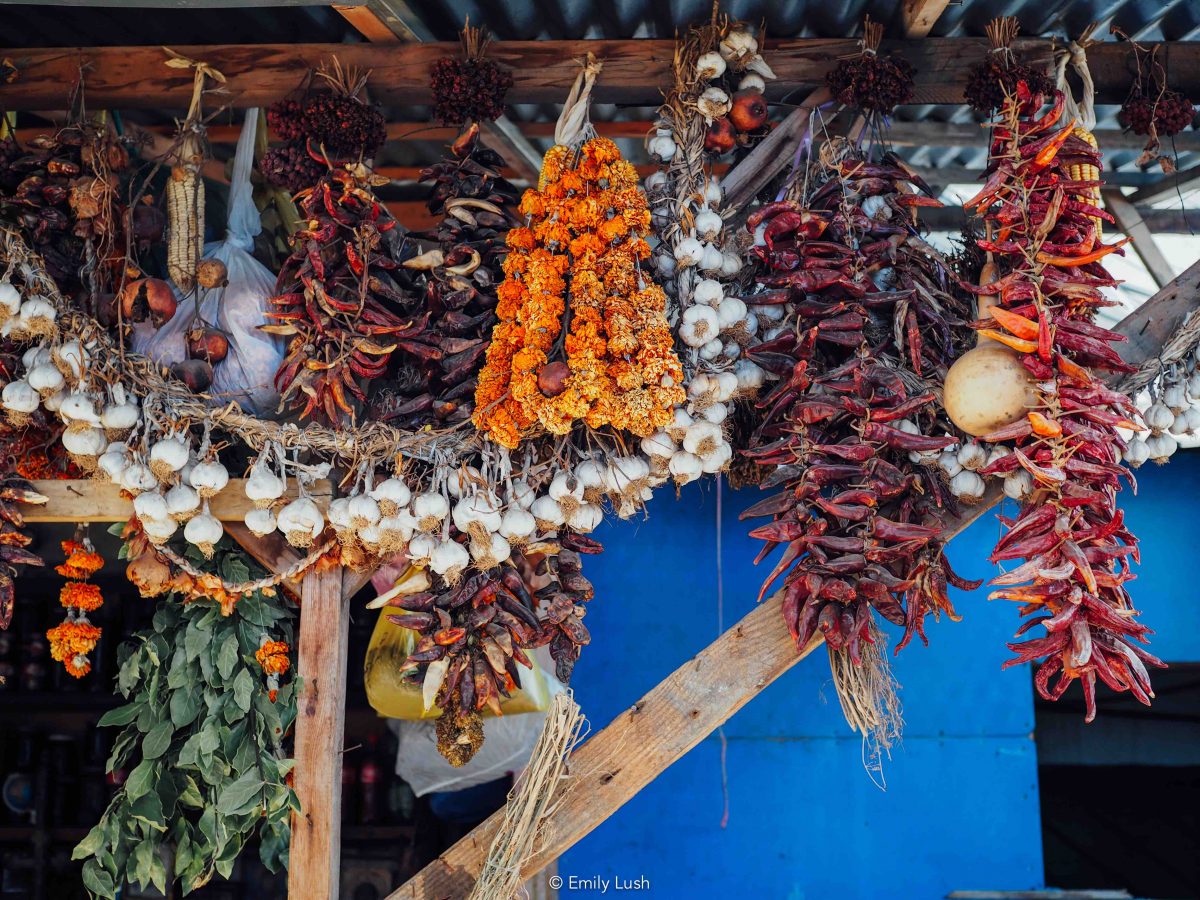
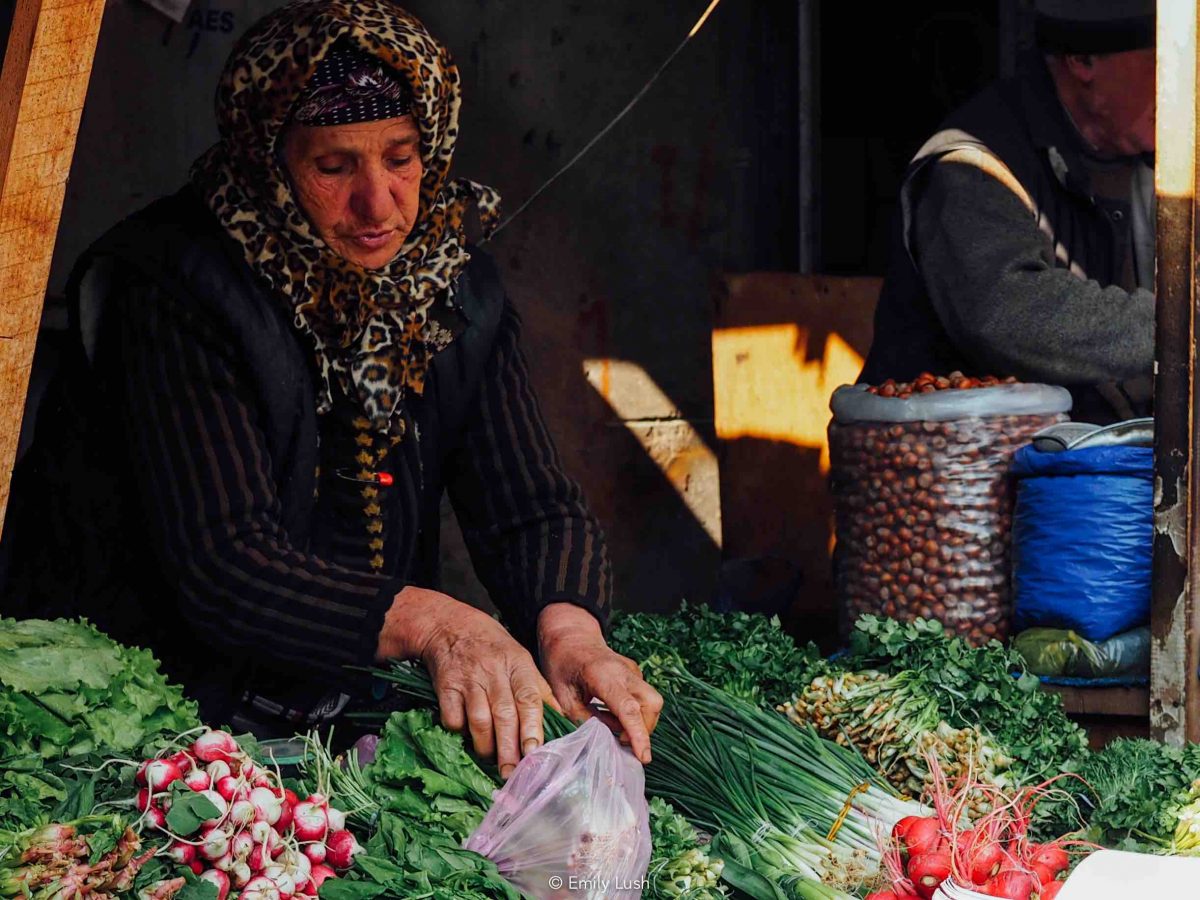
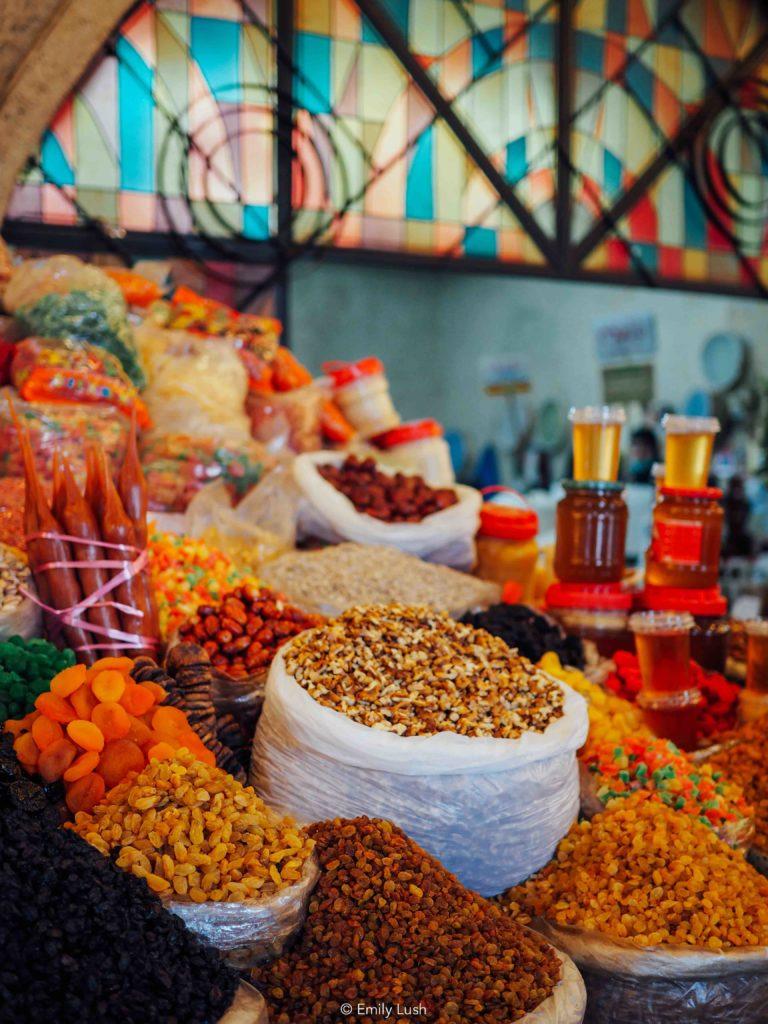
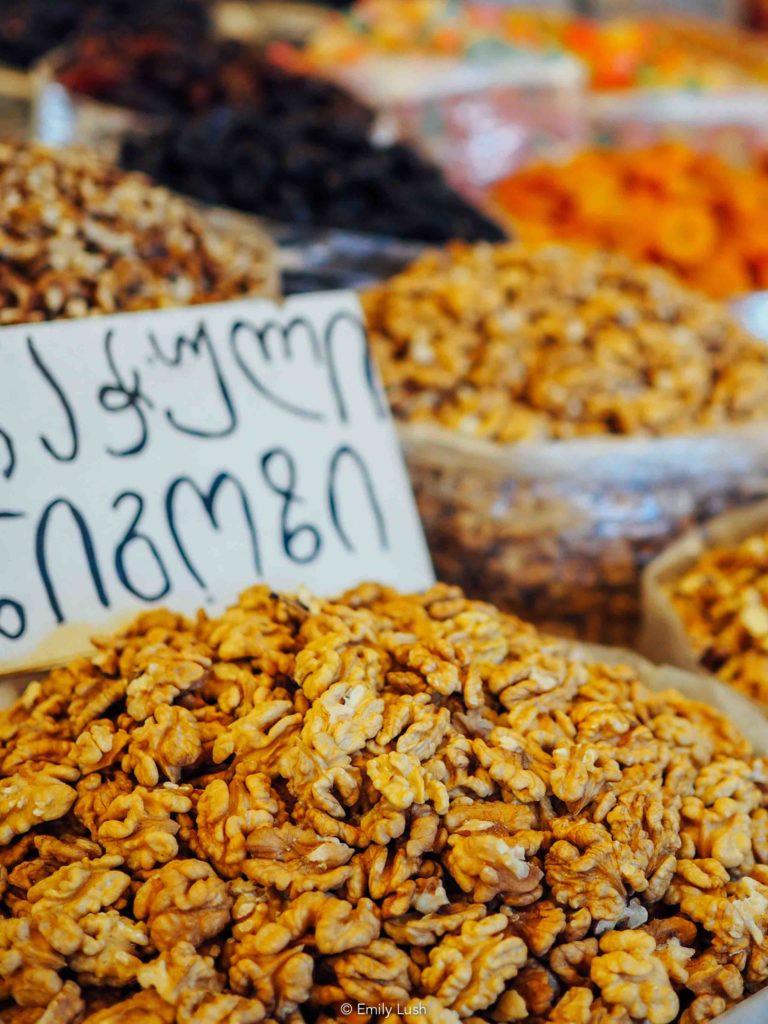
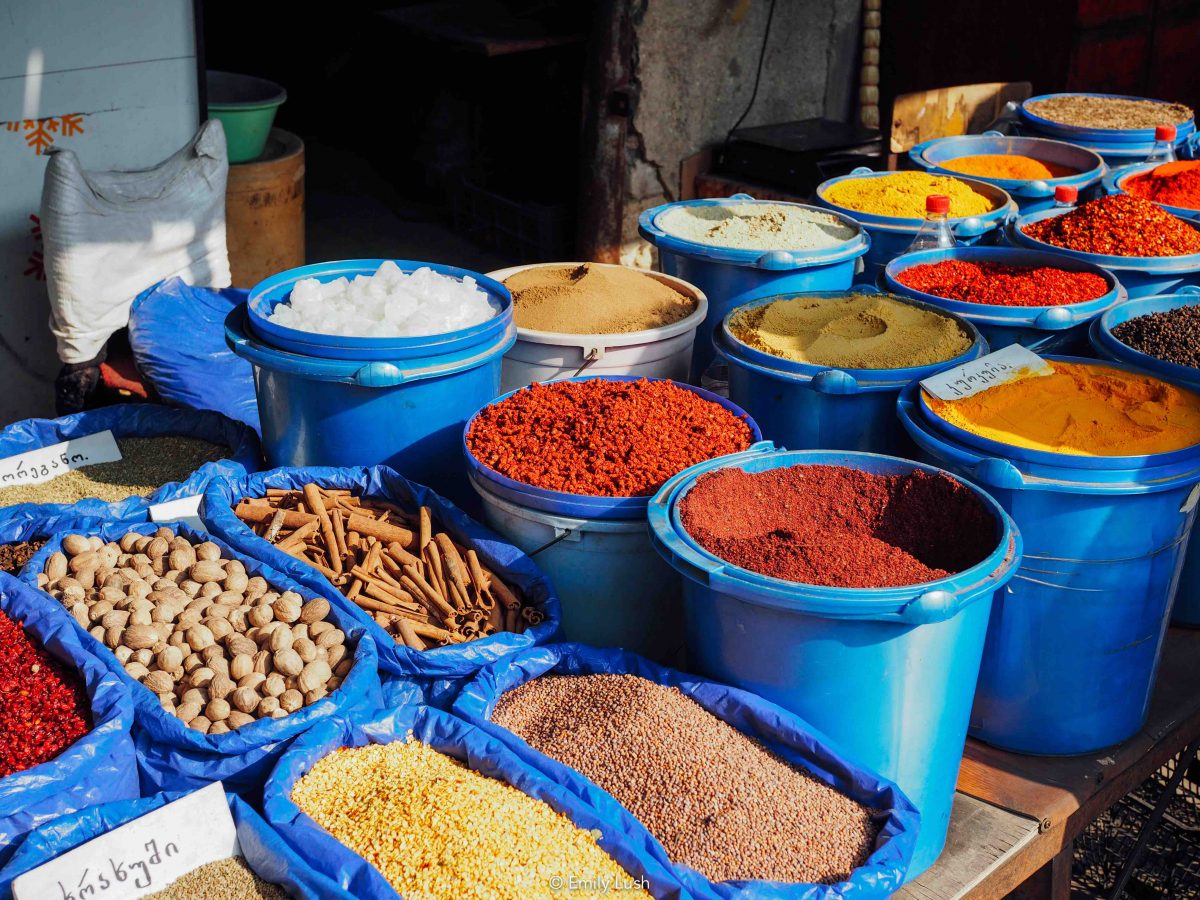
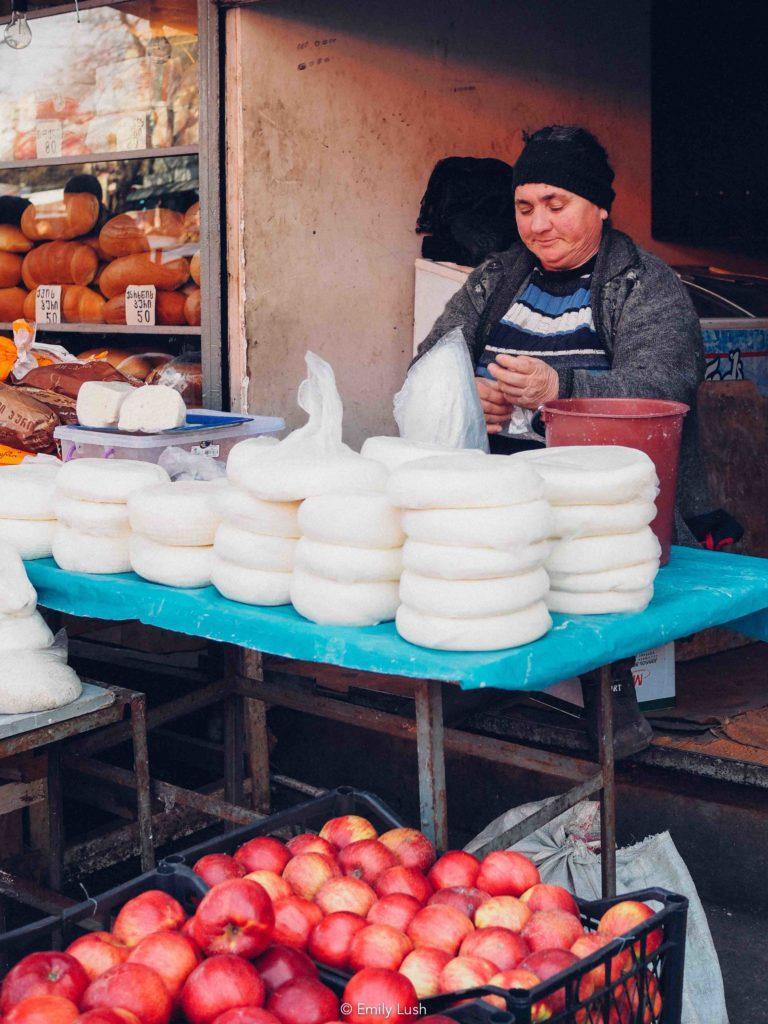

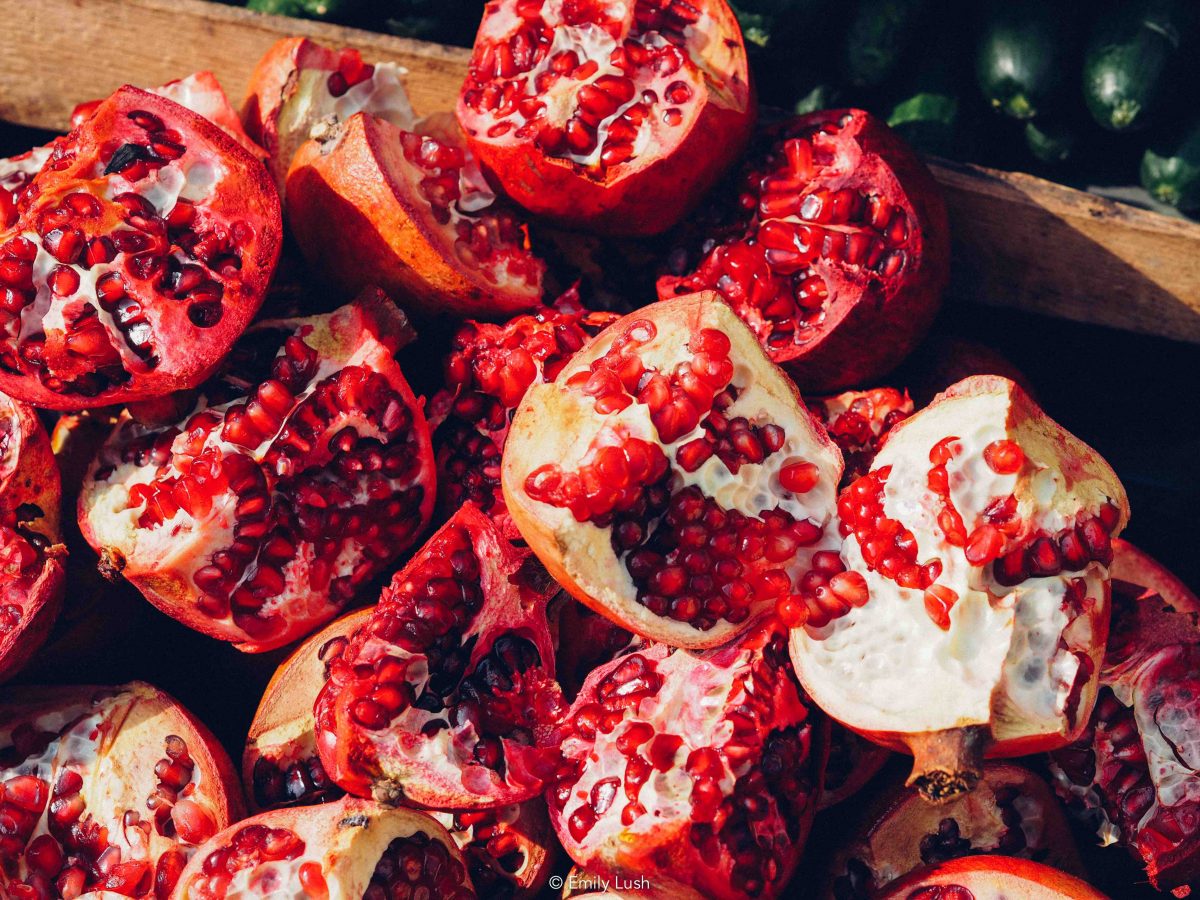
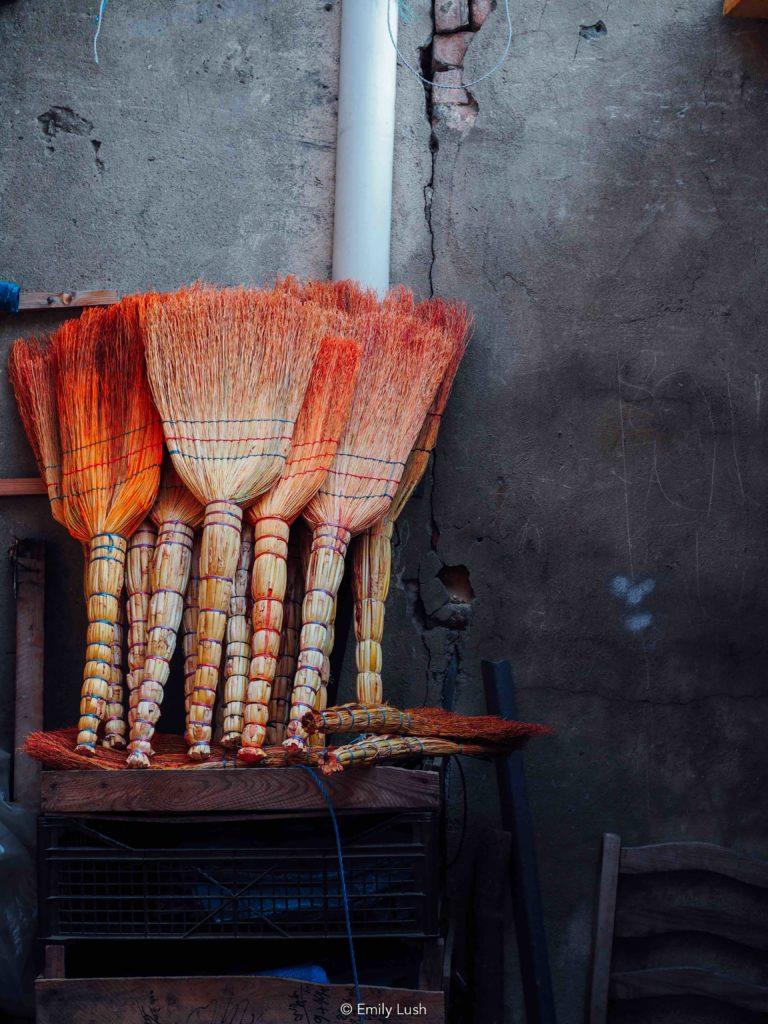
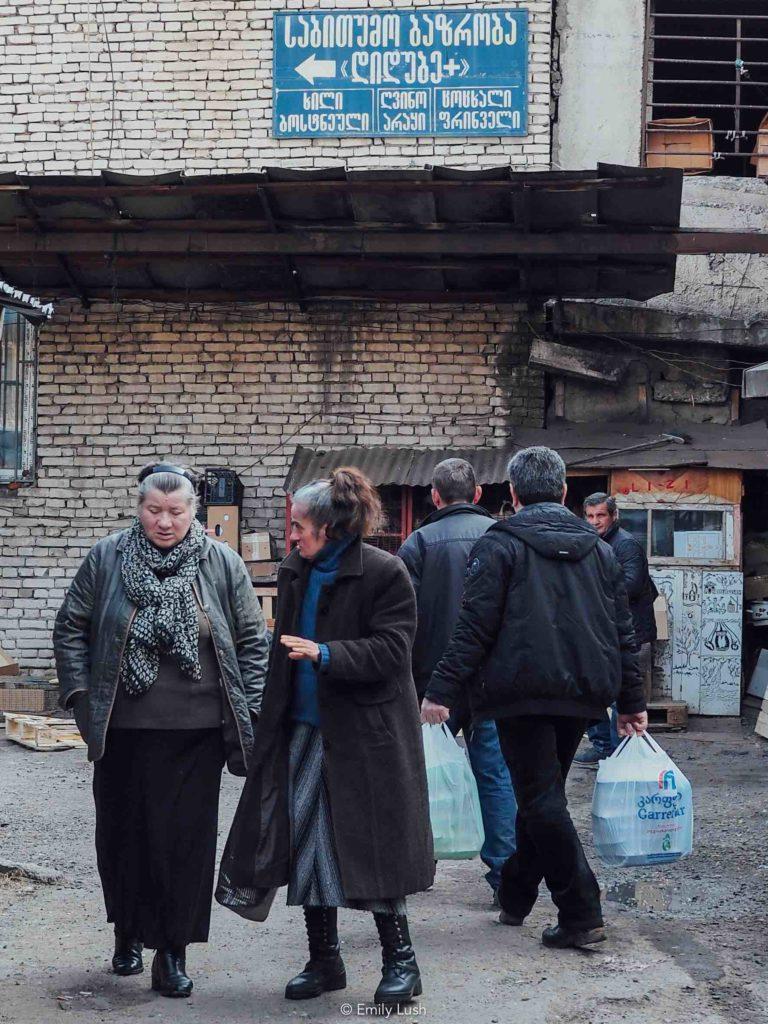
More market inspiration
Visiting the Dezerter Bazaar: Pin it!

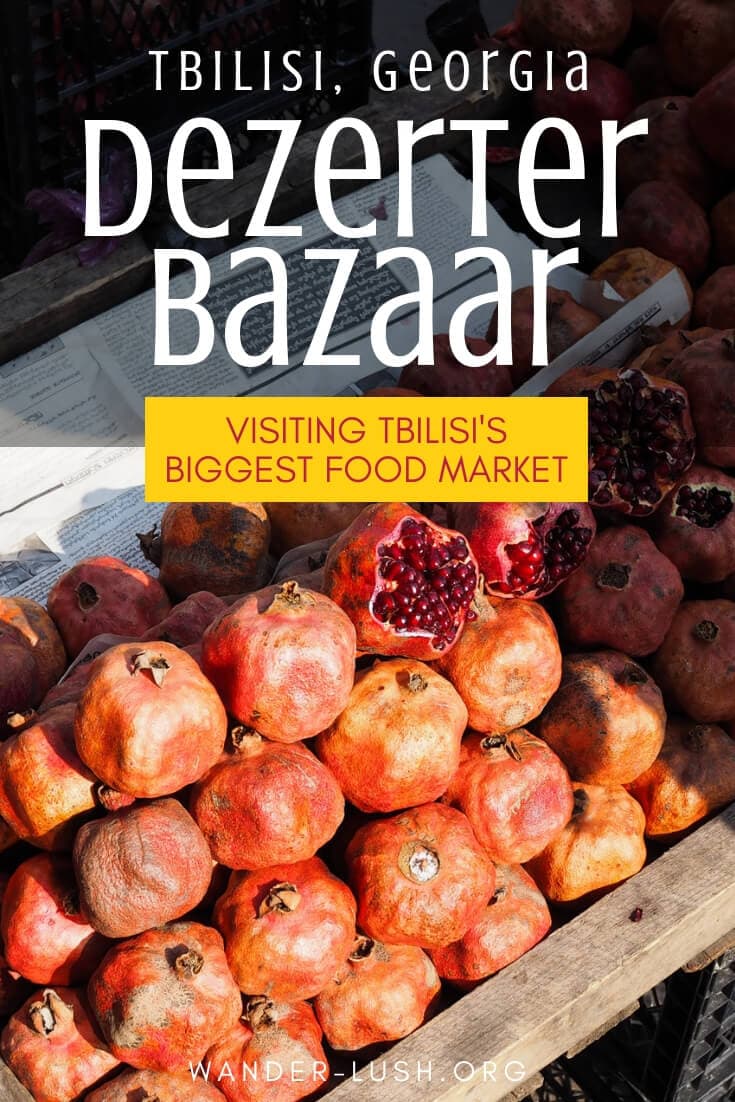
You might also be interested in…
More Tbilisi posts you’ll love
For even more inspiration and resources, check out my new Georgia Travel Guide and my Georgia itinerary.



